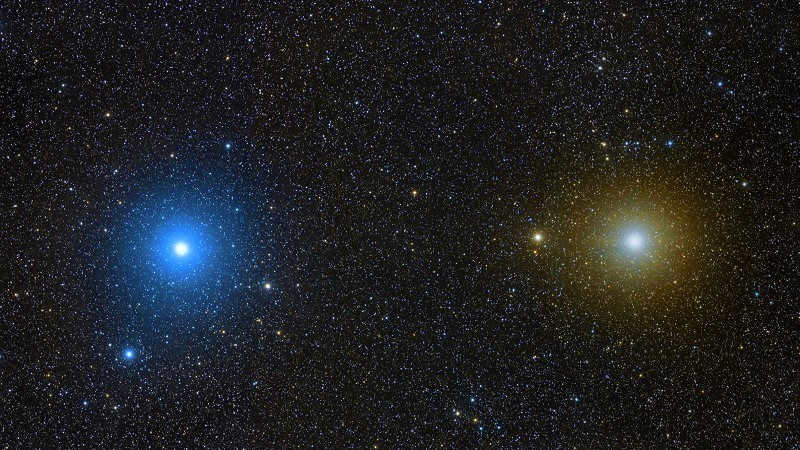
The Universe is home to numerous celestial bodies, including stars of various sizes. While the Sun is the closest star to Earth, it is not the largest. Despite our limited knowledge of the Universe, modern technology has allowed us to discover and study numerous stars and cosmic objects. Among them are colossal luminaries that make the Sun seem minuscule in comparison. These gigantic stars are well-known to anyone with an interest in astronomy.
Although these stars are incredibly far away, they can still be seen in the night sky due to their immense brightness, which enables their light to travel vast distances. So, what are these immense stars that mankind has discovered in the Universe?
Antares: The Enormous Star in the Scorpius Constellation

When it comes to discussing the largest stars, it is crucial to focus on the supergiant star in the Scorpius constellation – this red star has a radius that is approximately equal to 1200-1500, or slightly more, solar radii. Unfortunately, more accurate data is not yet available. The distance between this celestial object and Earth is estimated to be around 12 thousand light-years. It is possible to observe this object in the sky without the need for a telescope.

KY Swan is the largest known star in the universe, according to modern humans. It is located approximately 5 thousand light years away from Earth. This star is quite peculiar, as its mass is only 25 times greater than that of the Sun, yet its equatorial radius is 1420 times larger. Additionally, KY Swan emits a million times more light than the Sun, making it highly visible on the horizon.
Binary system in the constellation Cepheus

The VV in Cepheus can bring to mind Algol for those familiar with astronomy. In both cases, there is a binary system with two stars orbiting each other. The system is situated around 5,000 light years away, and the larger star has a radius of 1,050-1,900 times that of the Sun. However, accurately determining the size of this celestial object remains impossible.

If mankind still struggles to assert anything concrete about the entire Universe, then we can certainly say a lot about the Milky Way galaxy, which is part of the Solar System. And one of the most notable objects within it is VY Big Dog, known for its immense radius of 1300-1540 solar radii. This celestial body is highly unstable and astronomers predict that it will undergo a massive explosion within the next 100,000 years. The explosion of such a colossal object, which takes light 8 hours to circumnavigate, will result in powerful gamma-ray bursts that will propagate across vast distances. Fortunately, VY Big Dog is located 4,000 light years away from Earth, ensuring the safety of terrestrial life.
A star that varies in brightness, located in the Sagittarius constellation.

VX, a star located in the Sagittarius constellation, possesses immense proportions and exhibits pulsating behavior. It is capable of both expanding and contracting, causing fluctuations in both its size and temperature. During its most expanded state, its diameter can reach up to 1520 times that of our Sun. This celestial body presents a captivating spectacle, resembling the behavior of a human heart.

This celestial object is an enormous supergiant star. If it were located at the center of our solar system, its photosphere would extend all the way to Jupiter’s orbit. The star, which is approximately 11,500 light-years away from Earth, has a size of about 1,520 to 1,540 times that of the Sun.
The Colossal Star in the Goldfish Constellation

The constellation Goldfish is home to a red supergiant star known as WOH G64. This massive star is located relatively close to our Solar System and is the largest object in its neighboring galaxy, the Magellanic Cloud. WOH G64 is situated at a distance of 163,000 light-years from us. With a radius estimated to be between 1500-1700 times that of the Sun, this star is truly immense. However, scientists predict that WOH G64 will go supernova in the near future, lasting only a few thousand more years. The explosion of such a colossal object would undoubtedly be a captivating and extraordinary event.
RW Cepheus
RW Cepheus is a star located in the constellation of Cepheus. It is an interesting star due to its variability in brightness. RW Cepheus is classified as a Mira variable star, which means that its brightness changes over time. It is one of the brightest Mira variables in the night sky, with a maximum brightness of about magnitude 5.8. The star has a period of about 430 days, during which its brightness varies by about 7 magnitudes.
RW Cepheus is also known for its large size. It is estimated to be about 500 times the size of our Sun, making it one of the largest known stars. Despite its large size, RW Cepheus is relatively cool, with a surface temperature of about 3,500 Kelvin.
Studying stars like RW Cepheus can provide valuable insights into the life cycle of stars and the processes that occur within them. The variability in brightness observed in Mira variables is thought to be due to pulsations in the star’s outer layers, which cause changes in its temperature and brightness. These pulsations can be used to study the internal structure and evolution of stars.

The constellation of Cepheus is home to a massive red supergiant called RW Cepheus. This star has a radius 1,636 times larger than the Sun and is situated 2,739 light-years away from our solar system.
Swan’s NML
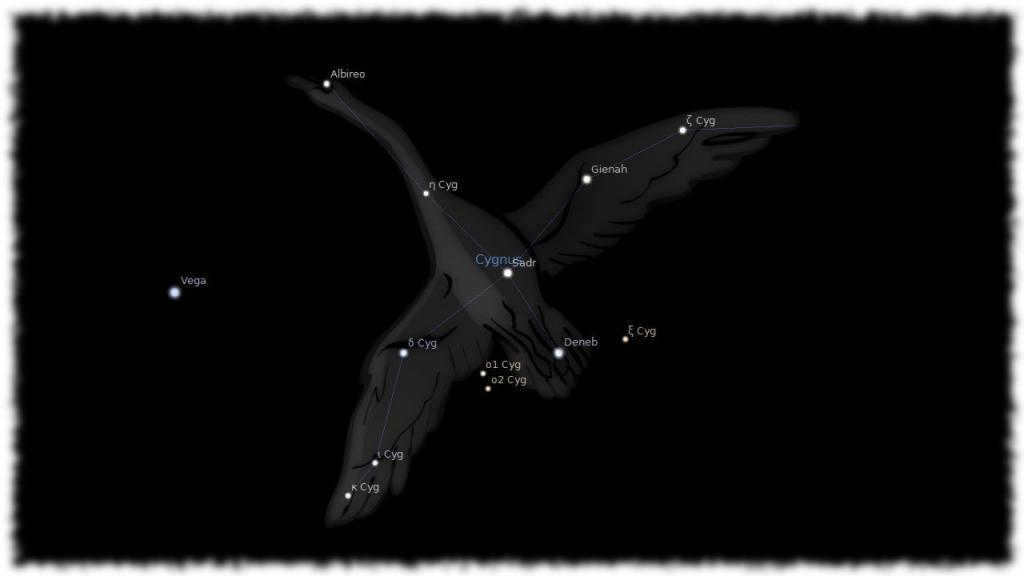
The celestial body in the constellation Swan, known as the hypergiant, holds the second position among all the stars that have been discovered by humanity. Situated 5300 light-years away from our Solar System, this object possesses a radius that is equivalent to 1650 times that of the Sun. Researchers have been diligently studying this star, which exhibits an extraordinary composition. In addition to the presence of hydrogen and helium, which are commonly found in most stars, this celestial body also contains water, hydrogen sulfide, sulfur oxide, and various other elements.
The Utilization of the Shield

Located 9,500 light years away from Earth, the hypergiant UY in the constellation Shields holds the title of the second largest star in the known universe as of 2021. With a radius of 1,708 times that of the Sun, this celestial body is capable of generating an astounding 120,000 times more energy than our own star. However, despite its immense power, this star is not easily visible in the night sky. Scientists attribute this to the fact that it is surrounded by a dense cloud of gas and dust, which scatters its light and makes it difficult to observe. Interestingly, the presence of such a cloud indicates that planetary formation may be occurring around UY. This is reminiscent of the early stages of our own solar system, when a similar cloud of gas and dust surrounded the Sun, eventually leading to the formation of our own planetary system.
The star, also known as RSGC2-18, holds the title of being the largest in the universe as of 2020. RSGC2-18, also referred to as Stevenson 2-18, is a red hypergiant that belongs to the Stevenson 2 star cluster. This astronomical marvel was first brought to the attention of scientists in 1990 by Ch. Stevenson, but it wasn’t until recently that its immense size was confirmed.
Stevenson 2-18 boasts a radius 2158 times larger than that of the sun, and its luminosity is a staggering 440 thousand times higher than our own star. Located 18900 light-years away from Earth, this celestial body emits an effective temperature of 3200 K. According to experts, if Stevenson 2-18 were positioned at the center of our solar system, it would engulf everything in its path up to the borders of Saturn. In fact, this colossal star cannot be observed with the naked eye in the night sky.
Therefore, there exist stars that are hundreds of times larger than the Sun, making a star that humans are familiar with appear minuscule in comparison. However, this is actually advantageous because being in close proximity to massive stars would result in enormous amounts of radiation, effectively preventing the formation of terrestrial life and annihilating it in the process. Additionally, being in close proximity to large stars poses a risk of complete annihilation during their explosive demise at the end of their existence. Fortunately, our planet is situated in a relatively safe location, far away from these colossal celestial bodies.
An intriguing video about the vastest stars in the Universe
If any discrepancies are found, kindly highlight the specific text and press Ctrl+Enter.
While not everyone may be familiar with the names of stars and constellations, most have at least heard of the more popular ones.
Constellations are referred to as expressive groupings of stars, and the names assigned to these stars and constellations possess a certain enchantment.
It is widely accepted that tens of thousands of years ago, predating the existence of the earliest civilizations, humans began bestowing names upon these celestial bodies. The cosmos is teeming with heroes and monsters from ancient legends, and the sky above our northern latitudes is predominantly inhabited by characters from Greek mythology.
Photograph of the Celestial Sphere’s Constellations and their Names
The celestial sphere is adorned with 48 ancient constellations, each of which is intricately intertwined with a captivating legend. It is no surprise that stars have played a significant role in the lives of humans, as their knowledge has been essential for activities such as navigation and large-scale farming.
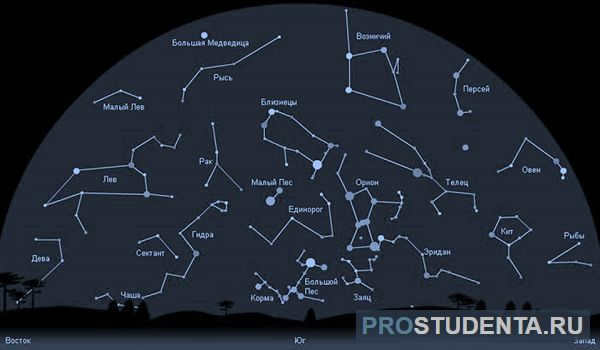
Among all the constellations, the ones that really stand out are the non-sunset ones, which can be found at latitudes of 40 degrees or higher. People living in the northern hemisphere can always see these constellations, no matter what time of the year it is.
The top 5 non-sunset constellations, listed alphabetically, are Dragon, Cassiopeia, the Big and Little Dipper, and Cepheus. These constellations can be seen all year round, especially well in the southern parts of Russia. However, in northern latitudes, the circle of non-setting stars is even wider.
The most brilliant celestial body in the firmament
The most brilliant star in the night sky can be found in the constellation Canis Major, also known as the Big Dog. In the winter months, at our northern latitudes, its radiant presence graces our view. Positioned relatively close to our solar system, this celestial marvel’s luminous rays travel through space and time, taking approximately 8.6 years to reach our humble abode.
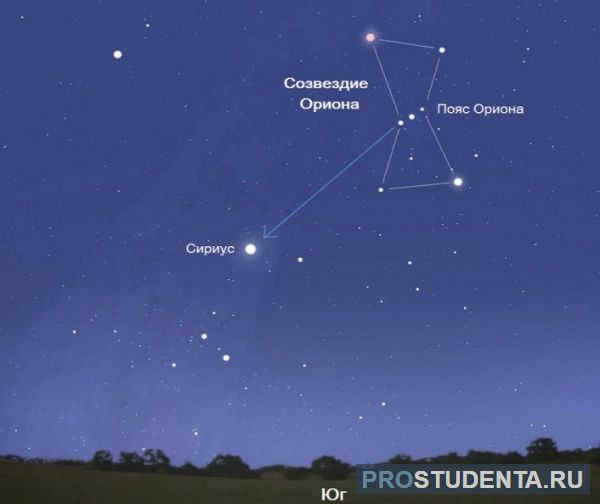
In ancient times, the Sumerians and Egyptians regarded Sirius as a divine entity. The priests of Egypt, about 3,000 years ago, were able to accurately predict the timing of the annual Nile flood by observing the rising of Sirius.
Sirius is a binary star system. The primary star, known as Sirius A, is approximately twice the mass of the Sun and shines 25 times brighter. Sirius B, on the other hand, is a white dwarf star with a mass comparable to that of the Sun, but with only a quarter of the Sun’s brightness.
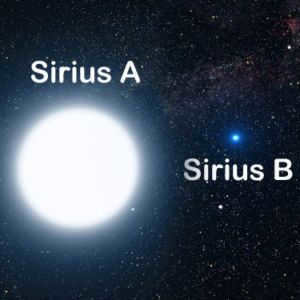
Sirius B is likely the most massive white dwarf that astronomers are aware of. Dwarfs of this type that are ordinary are twice as light.
Arcturus in Volopassus is the brightest in northern latitudes and is one of the most unique stars. It is 7.3 billion years old, which is almost half the age of the universe. With a mass approximately equal to that of the sun, it is 25 times larger, as it is composed of the lightest elements – hydrogen and helium. It seems that when Arcturus formed, metals and other heavy elements were not plentiful in the universe.
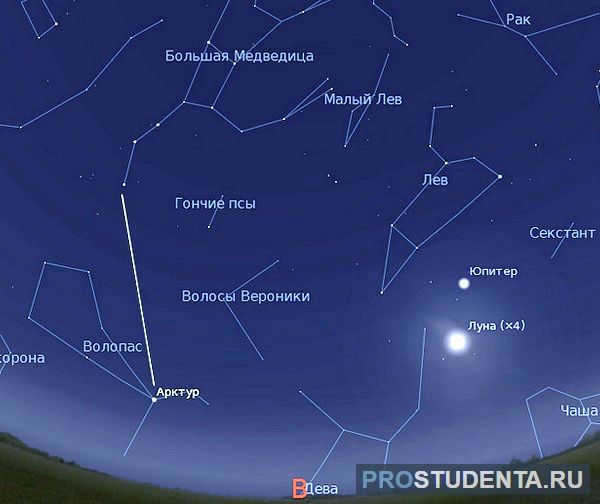
Similar to a monarch in banishment, Arcturus traverses the vastness of the cosmos encircled by a retinue of 52 celestial bodies. Conceivably, these luminous companions were once constituents of a galaxy that was engulfed by our own Milky Way eons ago.
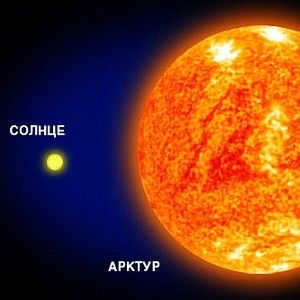
Arcturus is located at a distance of approximately 37 light-years – not too far away, considering the vastness of the cosmos. Belonging to the category of red giants, it emits light that is 110 times brighter than that of the Sun. The image provided illustrates the relative sizes of Arcturus and the Sun.
Classification of Stars Based on Color
The color exhibited by a star is determined by its temperature, which in turn is influenced by its mass and age. The hottest stars are the young and massive blue giants, with surface temperatures reaching up to 60,000 Kelvin and masses up to 60 times that of the Sun. Slightly less hot are the class B stars, among which Spica, the brightest star in the Virgo constellation, stands out.
On the other end of the spectrum, we have the coldest stars known as small, old red dwarfs. These stars have an average surface temperature of 2-3 thousand Kelvin and a mass equivalent to about one-third that of the Sun. The diagram clearly illustrates how the size of a star influences its color.
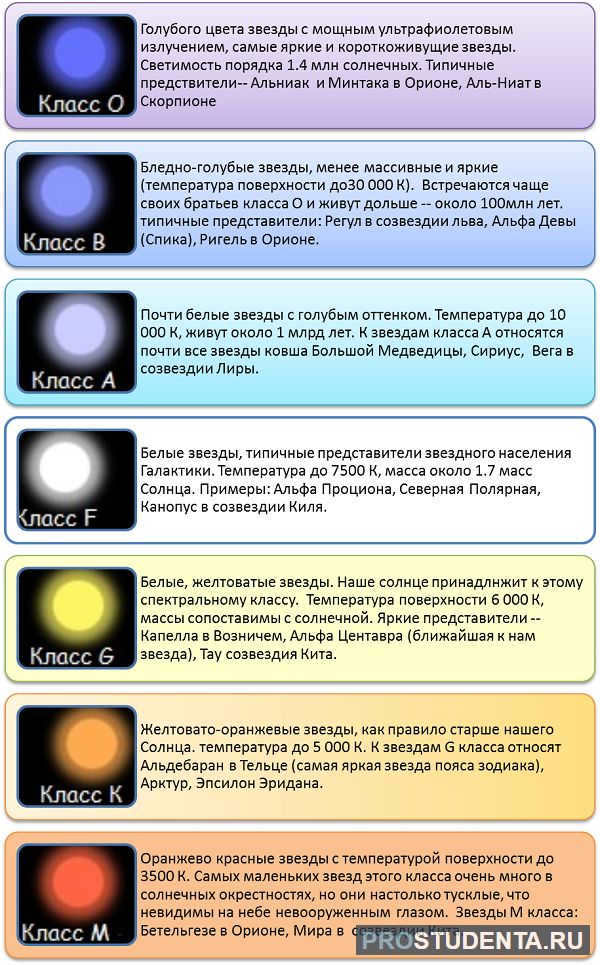
Stars are classified into 7 spectral classes based on their temperature and color, which are represented by Latin letters in astronomical descriptions.
Star names with a touch of beauty
The language of modern astronomy is practical and devoid of poetic names for stars. However, ancient civilizations bestowed names upon the brightest and most significant celestial bodies that illuminated the night sky. Many of these names have Arabic roots, while others trace back to ancient civilizations such as the Akkadians and Sumerians.
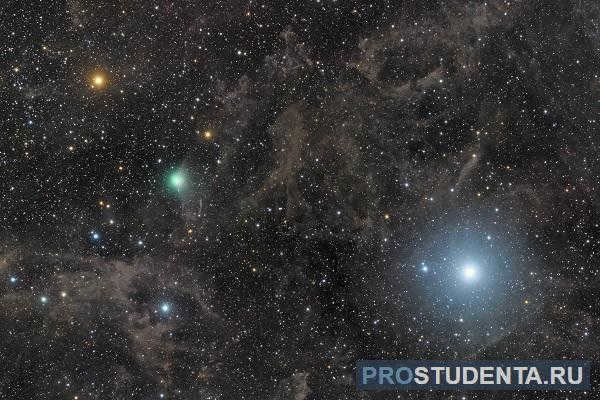
Polaris. The dim star located in the handle of the Little Bear’s dipper serves as the guiding symbol for all seafarers from ancient times. Polaris remains almost stationary and consistently points towards the north. Various nations in the northern hemisphere have assigned different names to this star. The ancient Finns referred to it as the “Iron stake,” the Khakasses called it the “Tethered horse,” and the Evenks described it as the “Hole in the sky.” The ancient Greeks, known for their exploration and sailing, named it “Kinosura,” which translates to “dog tail.”
Sirius. The star got its name from ancient Egypt, where it was associated with a manifestation of the goddess Isis. In ancient Rome, it was known as Canicula, and our “holiday” directly originates from this term. This is because Sirius would appear in Rome at dawn during the summer, when the city’s life would come to a halt due to extreme heat.
Aldebaran. It always follows the cluster of the Pleiades in its movement. In Arabic, it means “follower.” The Greeks and Romans referred to Aldebaran as the “Eye of the Calf.”
The Pioneer 10 probe, which was launched in 1972, is currently heading towards Aldebaran. The estimated time of arrival is 2 million years.
Vega was the first star (after the Sun) to have its picture taken. This event occurred nearly 200 years ago in 1850 at the Oxford Observatory.
Betelgeuse. Its Arabic name is Yad Al Juza (twin hand). During the Middle Ages, there was confusion in translation, and the name was mistakenly read as “Belle Juza,” which eventually became Betelgeuse.
This star is adored by science fiction writers. One of the characters in the novel “Hitchhiker’s Guide to the Galaxy” hails from a small planet in the Betelgeuse system.
Fomalgaut. Also known as Alpha South Pisces. Its Arabic name means “Fish Mouth.” It ranks as the 18th brightest star visible at night. Archaeologists have discovered evidence of Fomalhaut worship dating back to prehistoric times, around 2,500 years ago.
Canopus. One of the few stars with a name that does not have Arabic origins. According to Greek mythology, the name is derived from Canopus, the helmsman of King Menelaus.
In the famous series of books by F. Herbert, the planet Arrakis orbits around Canopus.
How many constellations are there in the sky
As it has been established, people have been grouping stars together for at least 15,000 years. In the earliest written records, dating back 2 millennia, 48 constellations are described. Most of these constellations are still visible today, although the larger Argo constellation has been divided into four smaller ones – Carina, Vela, Puppis, and Pyxis.

The 15th century saw the emergence of new constellations thanks to advancements in seafaring. The sky became adorned with imaginative figures such as the Peacock, Telescope, and Indian. The exact year of the last constellation’s appearance is known – 1763.
In the early 20th century, a comprehensive revision of constellations occurred. Astronomers identified a total of 88 star groups, with 28 in the northern hemisphere and 45 in the southern hemisphere. Among these are the 13 constellations that make up the zodiac belt. This final count is not expected to be surpassed by future astronomers.
Constellations in the Northern Hemisphere – a collection of images
Regrettably, it is not feasible to observe all 28 constellations in a single evening due to the unyielding nature of celestial mechanics. However, we are fortunate to have a delightful assortment. The skies of winter and summer offer contrasting views.

Now, I would like to discuss the most captivating and prominent constellations.
The Great Bear – serves as a fundamental guidepost in the celestial expanse. It conveniently directs stargazers towards various astronomical marvels.
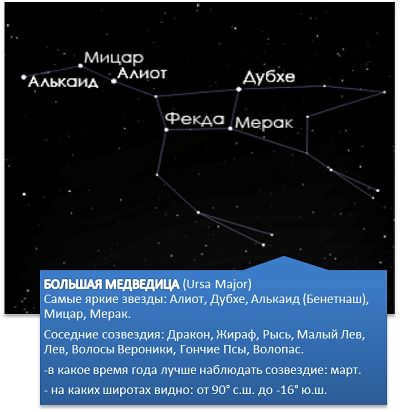
The well-known Polaris is located at the end of the tail of the constellation Ursa Minor. Unlike their terrestrial counterparts, celestial bears have remarkably long tails.
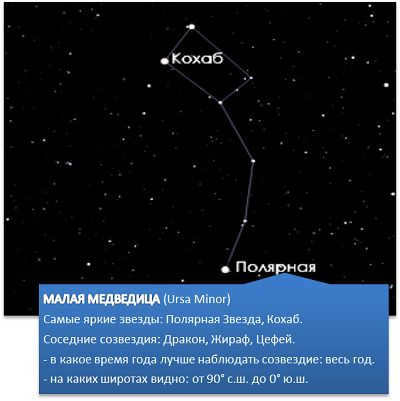
Dragon is a vast constellation located between the constellations of Ursa Major and Ursa Minor. One remarkable star in the Dragon is called Arrakis, derived from the Old Arabic word meaning “dancer.” Another interesting feature is Kuma, a binary star system located in the ν region of the Dragon, which can be easily observed using regular binoculars.

The supergiant star ρ in the constellation Cassiopeia is well-known for being incredibly bright, shining hundreds of thousands of times more intensely than the Sun. In the year 1572, Cassiopeia experienced a remarkable explosion, marking the most recent significant event in its history.
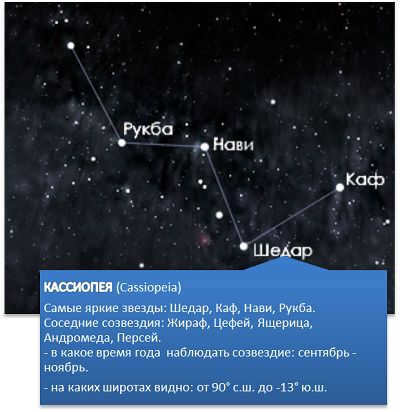
The ownership of Lyra was a subject of disagreement among the ancient Greeks. Lyra was attributed to different heroes in various legends, such as Apollo, Orpheus, or Orion. Notably, the constellation Lyra includes the renowned star Vega.

Orion is an astronomical formation that stands out in our sky. The Three Kings or Magi, which are the main stars of Orion’s belt, are well-known. Additionally, Betelgeuse, a famous star, can also be found in this constellation.
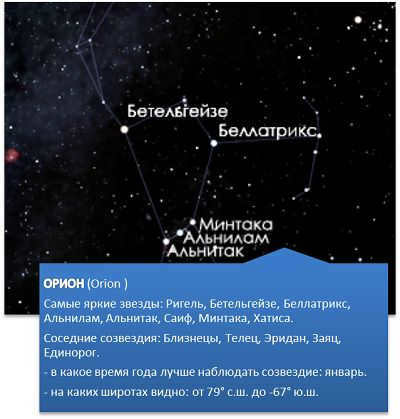
Cepheus is visible throughout the year. After 8,000 years, one of the stars in this constellation, Alderamin, will take over as the new North Star.

In Andromeda you can find the M31 nebula. This nebula is located in a neighboring galaxy and can be seen with the naked eye during a clear night. The distance between us and the Andromeda Nebula is 2 million light years.
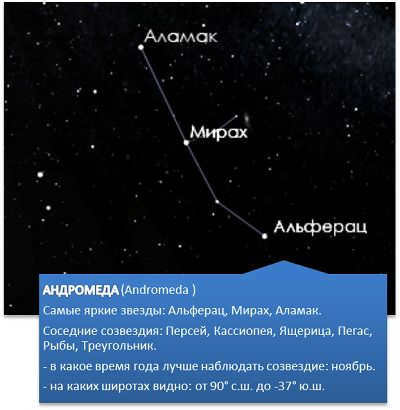
The constellation known as Veronica’s Hair is aptly named after an Egyptian queen who selflessly offered her own hair as a sacrifice to the gods. Situated in the vicinity of Veronica’s Hair lies the northern celestial pole of our galaxy.
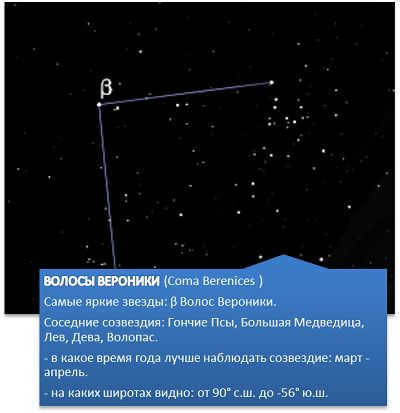
Arcturus, also known as Alpha Volopasa, is a well-known star. The galaxy Egsy8p7 resides beyond Volopas, at the outermost boundary of the observable universe. It is recognized as one of the farthest celestial objects ever discovered by astronomers, with a staggering distance of 13.2 billion light years.
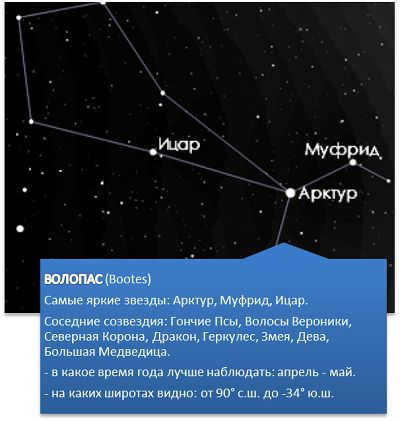
Constellations for kids – discover the most fascinating facts
Intriguing young stargazers will be captivated by the wonders of constellations and observing them in the night sky. Parents can organize a nocturnal adventure for their children, enlightening them about the incredible field of astronomy and allowing them to witness some constellations firsthand. These are the type of brief and comprehensible anecdotes that young adventurers are bound to adore.
The Ursa Major and the Ursa Minor
In ancient times, according to Greek mythology, the deities would transform individuals into various animals and place them in the heavens. This was just the way things were. One particular instance involved Zeus’ wife transforming a nymph named Callisto into a bear. The nymph had a young son who was unaware of his mother’s transformation into a bear.
As the son grew older, he became a skilled hunter and ventured into the forest armed with a bow and arrows. It so happened that he crossed paths with a mother bear. With his bow raised and arrow released, Zeus intervened by freezing time and catapulting them all into the sky – the bear, the hunter, and the arrow.
Ever since that moment, the Ursa Major has been seen traversing the sky alongside the Ursa Minor, which represents the transformed son of the hunter. The arrow also remains in the sky, suspended in motion, never hitting its target – this is the celestial order.

Locating the Big Dipper in the night sky is always a simple task, as it resembles a large bucket with a convenient handle. Moreover, if you manage to spot the Big Dipper, you are in luck because the Little Dipper is not far away. Although the Little Dipper may not be as noticeable, there is a clever method to locate it: by following the line connecting the two outer stars of the Big Dipper, you will be led directly to Polaris, which serves as the tail of the Little Dipper.
Polaris
All the celestial bodies are in constant motion, but Polaris remains stationary. It serves as a reliable reference point because it always indicates the direction of the North.
In ancient times, seafarers embarked on voyages without the aid of a compass while relying solely on the stars for navigation. When sailing on the vast open sea with no land in sight, it was incredibly easy to lose one’s way.
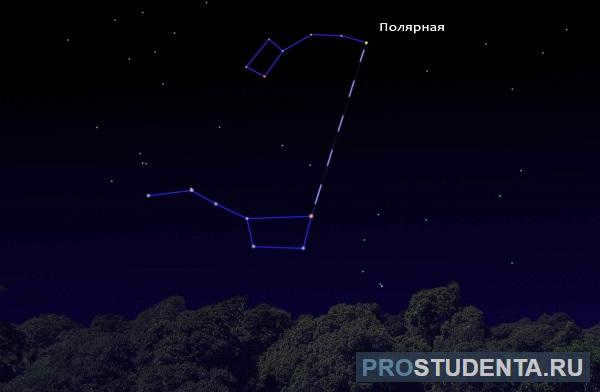
When this situation occurred, a seasoned captain would patiently await the arrival of nighttime to locate the Polar Star and determine the northern direction. By knowing the northern direction, one could effortlessly establish the whereabouts of the rest of the world and chart a course to bring the ship back to its home port.
Dragon
Within the celestial night sky, resides a mystical star dragon. Ancient tales speak of the dragon’s involvement in the epic battles between gods and titans, during the earliest era of existence. In the midst of the fierce conflict, the goddess of war, Athena, flung a colossal dragon into the heavens, positioning it precisely between the Big Dipper and the Little Dipper.

The constellation known as the Dragon is quite large, consisting of 4 stars that make up its head and 14 stars that form its tail. Despite its size, the stars that make up the Dragon are not particularly bright. One can speculate that this lack of brightness is due to the Dragon’s old age. After all, it has been an incredibly long time since the dawn of time, even for a mythical creature like the Dragon.
Orion
Orion, who was the son of Zeus, had a remarkable life filled with many extraordinary achievements. He gained fame as a skilled hunter and became a beloved favorite of Artemis, the goddess of hunting. Orion was known for his tendency to boast about his strength and good fortune. However, his life took a tragic turn when he was stung by a scorpion. Artemis, desperate to save her beloved Orion, pleaded with Zeus for help. In response, Zeus decided to immortalize Orion by placing him in the night sky, where he remains as a legendary hero of ancient Greece.

The constellation in the northern sky known as Orion is quite notable. It is a substantial constellation composed of luminous stars. Orion is visible in its entirety during the winter season and can be easily spotted: simply look for a large hourglass shape with three brilliant bluish stars positioned in the center. These particular stars are referred to as Orion’s belt, and they are named Alnitak (on the left), Alnilam (in the middle), and Mintak (on the right).
Familiarity with Orion aids in navigating the remaining constellations and locating stars.
Sirius
If you want to locate the renowned Sirius, all you have to do is determine the location of Orion first. By drawing a line towards the right side of Orion’s belt, you will be able to find the brightest star. Keep in mind that Sirius is only visible in the northern sky during the winter season.
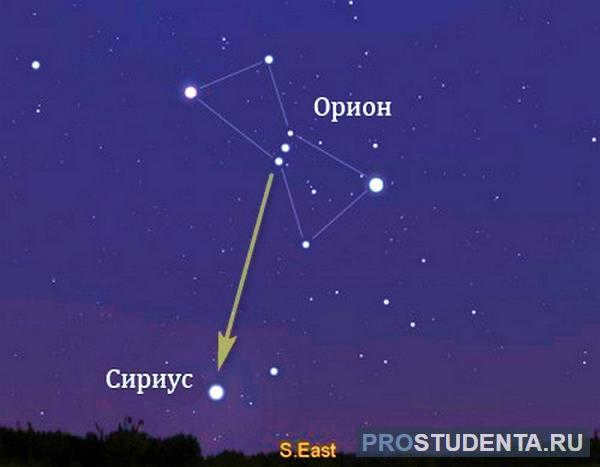
The brightest star in the sky is Sirius. It belongs to the constellation of Canis Major, which is the loyal companion of Orion.
Sirius is actually a binary star system. One star is extremely hot and luminous, and we can observe its light. The other star is much dimmer and cannot be seen with a regular telescope. However, in the distant past, these two components were once a single, massive star. If we had existed during that era, Sirius would have appeared 20 times brighter!
What star has a name that means “bright and sparkling”?
– Sirius. It is incredibly luminous and can even be seen during daylight.
Which constellations are visible to the naked eye?
– All of them. Constellations were created by ancient civilizations long before the invention of telescopes. Additionally, without the need for a telescope, you can observe planets such as Venus, Mercury, and Mars.
Which constellation is the largest?
– Hydra. It spans such a vast area in the sky that it cannot be fully contained within the northern hemisphere and extends beyond the southern horizon. Hydra covers almost a quarter of the entire horizon’s circumference.
Which constellation is the smallest?
– The smallest, yet also the most brilliant, is the Southern Cross. It is situated in the southern hemisphere.
What star group does the Sun belong to?
The Sun is part of a group called the Belt of the Zodiac, which consists of 12 constellations. As the Earth orbits around the Sun, we observe it passing through these constellations, with one constellation representing each month of the year.
Summary
The fascination with stars has been long-standing among humans. Despite advancements in astronomy that enable us to explore the depths of space, the allure of the ancient star names remains unchanged.
When we gaze at the night sky, we witness the past, ancient myths and legends, and even glimpse into the future, as one day humanity will venture towards the stars.
Humans have always been fascinated by the stars. They have been associated with superstitions and myths about extraterrestrial civilizations. They have also served as navigational tools and helped ancient civilizations make calculations.
Modern science continues to study these celestial bodies. In the following paragraphs, we will discuss the origins of the names of certain stars and constellations, as well as their significance in the Universe.
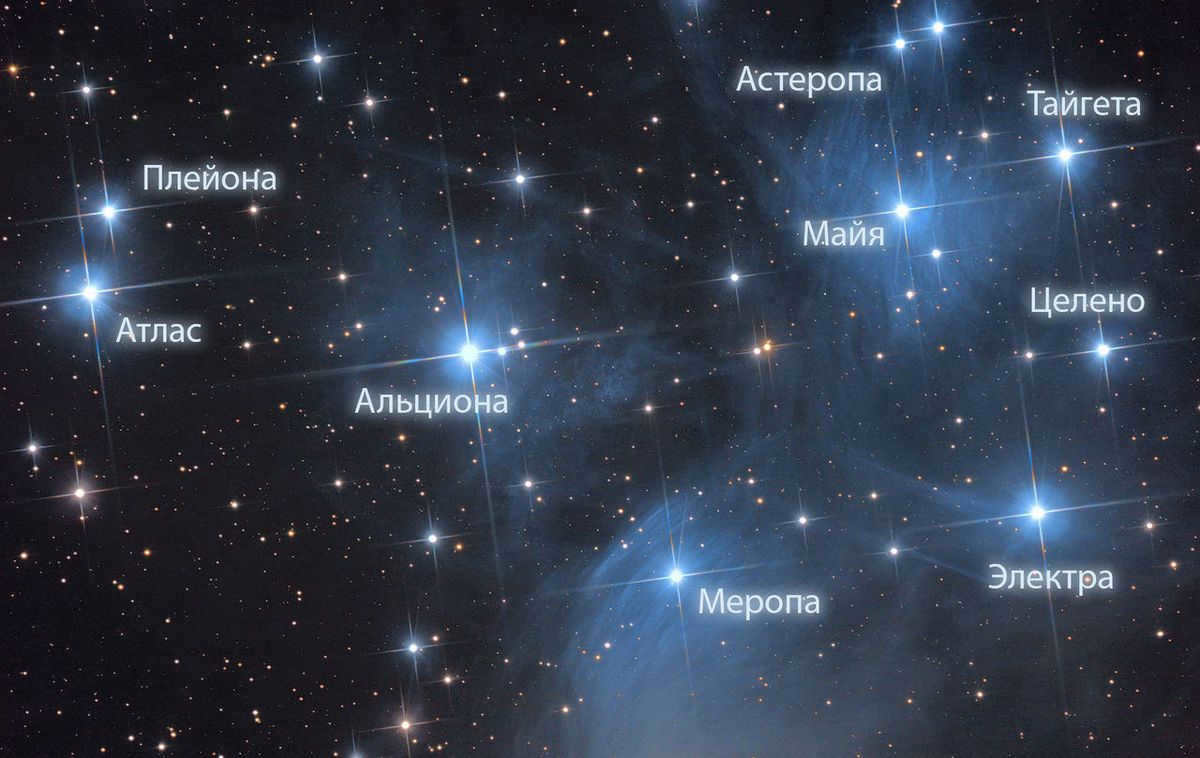
The Origins of Stellar Names
Our planet, Earth, is home to three primary races and 43 intermediate races. There are even some anthropologists who argue that there are over 200 unique races residing on Earth. Each of these races possesses their own celestial folklore and intricate cosmogony.

Many religions and ethnic traditions have references to other star systems and galaxies, which interestingly enough, find resonance in modern space exploration.
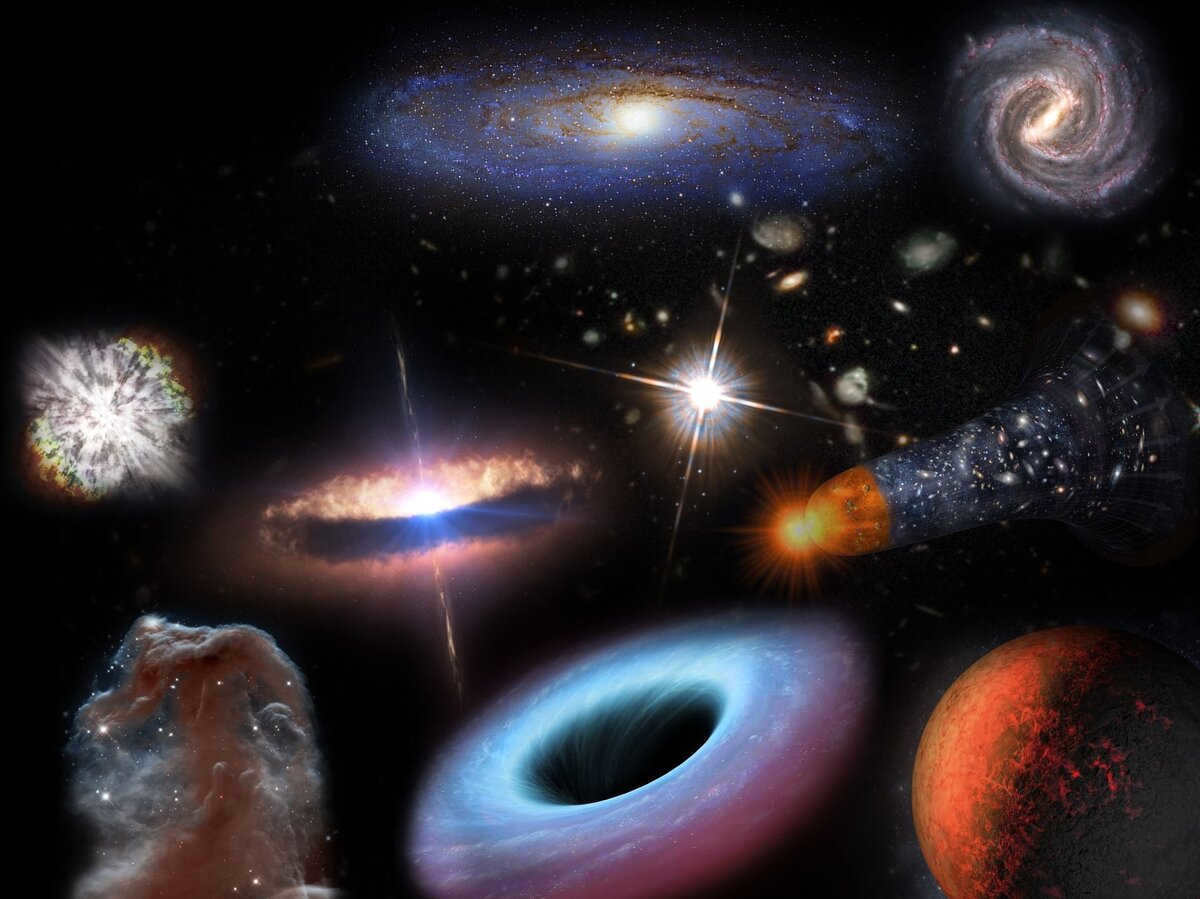
Among the most well-known names of stars and constellations today (those that are known on Earth), the most common are ancient names from Greek epics and Arab enlighteners’ narratives. These names have been passed down through European culture and are widely accepted in the field of astronomy.
The ancient Babylonians, who were pioneers in discovering and compiling horoscopes, were the first to ponder the nature of stars and their significance in human destiny.

The teachings of Zoroaster and Mithraism, as well as Greek hermeticism from Ancient Egypt and various philosophical schools, spread widely across the Oikumene, disseminating knowledge.

The names of stars and constellations started to be assigned to objects that didn’t quite match their true nature. For instance, the ancient Greeks believed that Sirius was a celestial body inhabited by gods, rather than a mere star.

The cosmos’ creation is depicted through the eternal conflict between the Titans and the Greek pantheon, as well as the ongoing battle between the Persian Devas and the Asuras. The Indian cycle of the Mahabharata also recounts tales of interstellar voyages and cosmic warfare.

The African Dogon culture has references to extraterrestrial beings from Sirius. Native Americans also possess their own fascinating cosmological folklore.

Therefore, when comparing these civilizations, it becomes evident that the Tibetans, ancient Greeks, Toltecs, Egyptians, as well as the runic script of Scandinavians and Slavs, share both similar and unique perspectives on the stars and constellations.

It’s fascinating to discover that various cultures across the globe have not only created stories and artwork about distant stars and aliens, but they have also left behind physical artifacts and structures that mirror the celestial map of the night sky. What’s even more intriguing is that some of these artifacts and structures display an astonishing level of accuracy in representing the actual astronomical arrangement.
A Contemporary Guide to the Stars
The starry sky is documented in a modern guide, which includes the designations of individual stars and constellations. These are categorized based on various principles:
- The names of heroes from worldwide myths and legends;
- The symbols of the zodiac;
- Names of animals and marine creatures;
- Inanimate objects.
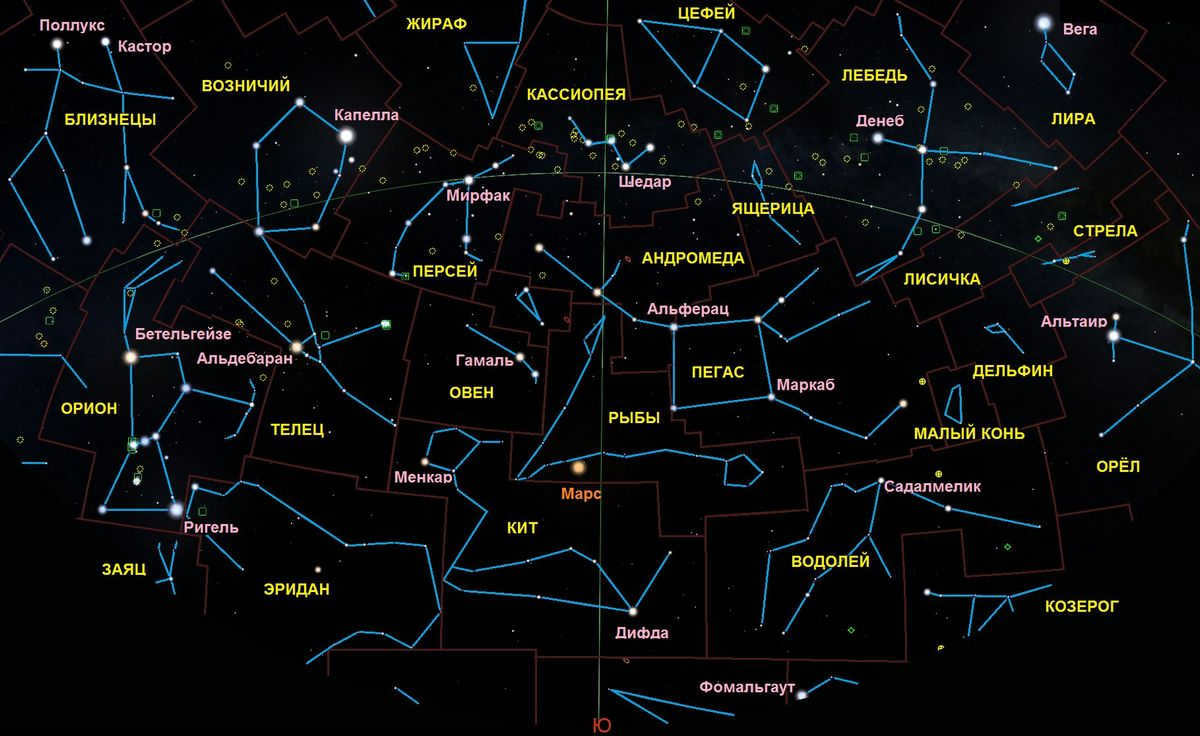
Throughout the course of human history, individuals from various cultures have bestowed names upon celestial bodies, paying tribute to significant events and remarkable individuals.
These entities were subsequently identified using numerical and alphabetical designations, frequently based on their coordinates. Eventually, the objects underwent a process of reclassification.
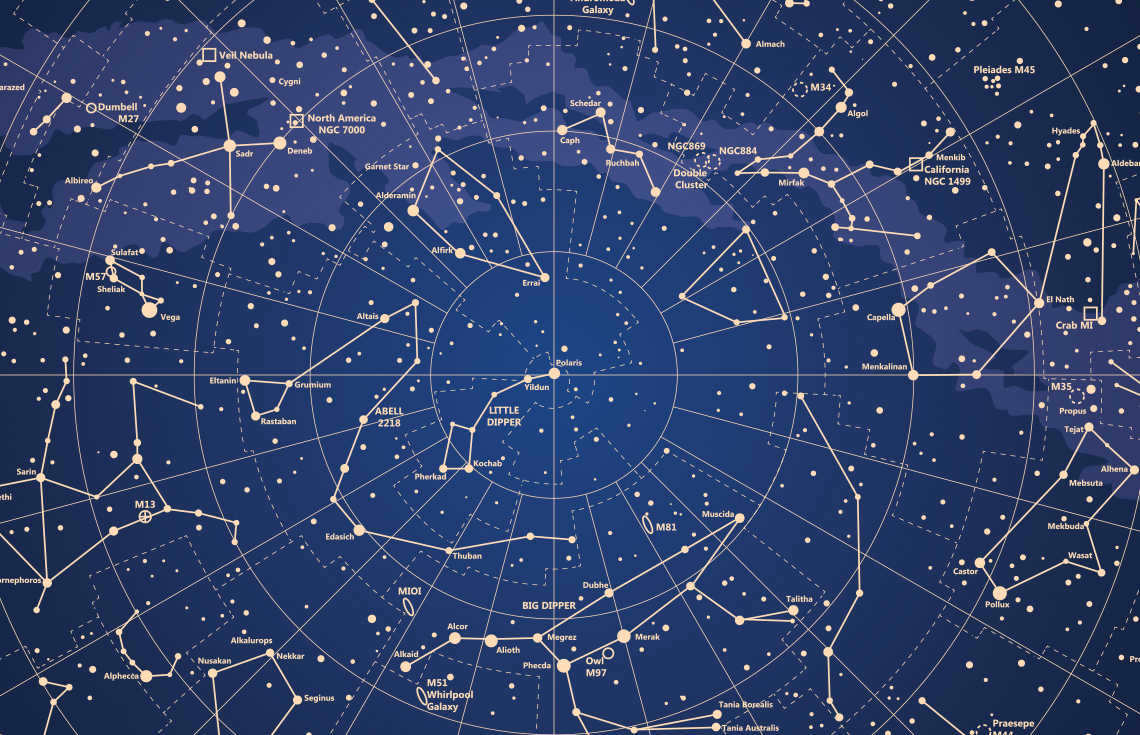

However, it is highly improbable to assign names to each and every one of them since there are only 100 to 400 billion stars in our Milky Way galaxy. The initial and principal names of these celestial bodies were recorded in Ptolemy’s almanac, known as the “Almagest.”

FUN FACT: Despite the incredible advancements in telescope technology, we can only observe around 50 billion galaxies from the Earth’s surface. However, the Hubble telescope, situated in Earth’s orbit, can detect around 125 billion galaxies. Surprisingly, even without the aid of binoculars or telescopes, the naked eye can still spot approximately 6,000 stars. Astonishingly, out of these 6,000 stars, only 300 of them have been given names.
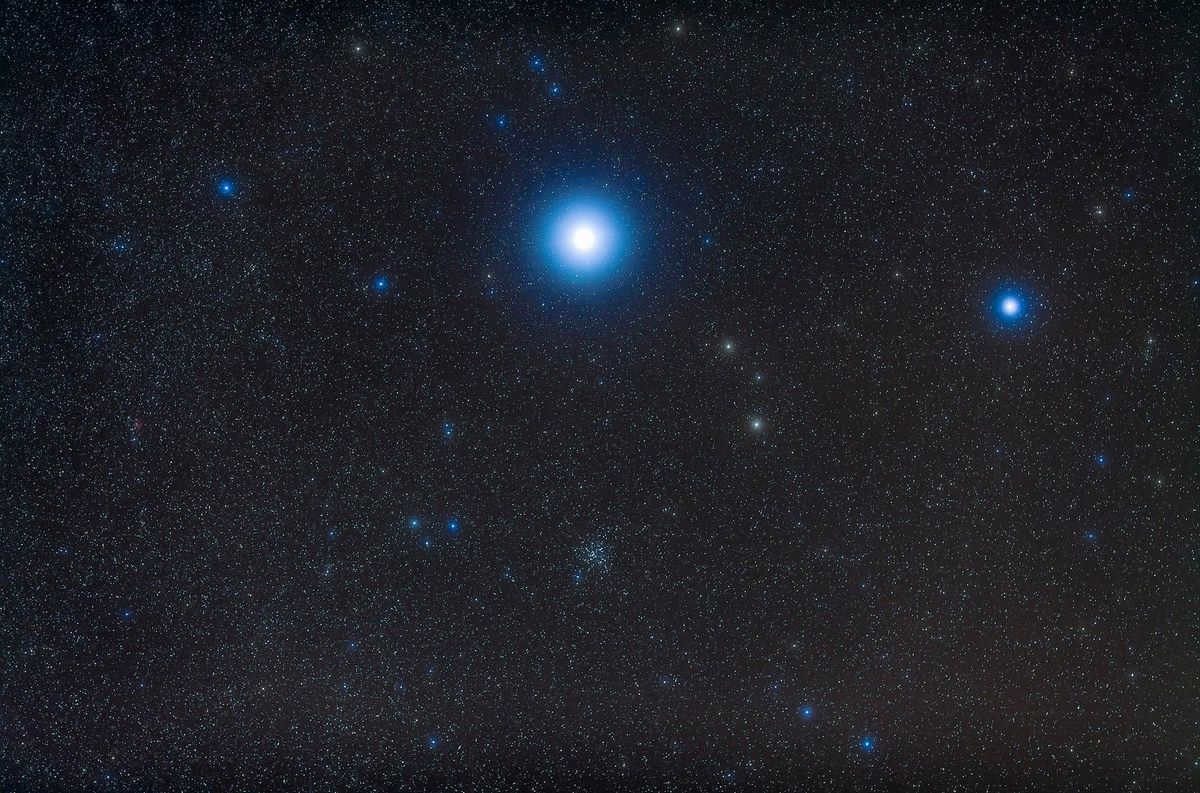
List of Stunning Star Names
Presented below is a compilation of stars, showcasing the most vibrant and renowned celestial bodies within our galaxy. Included are the exquisite names given to these stars and star systems throughout the course of Earth’s civilization and its history of observation and discovery.

Antares
The light of Antares, a celestial body emitting a vibrant red spectrum, has been known to cause confusion with the planet Mars, especially among those lacking specialized knowledge.
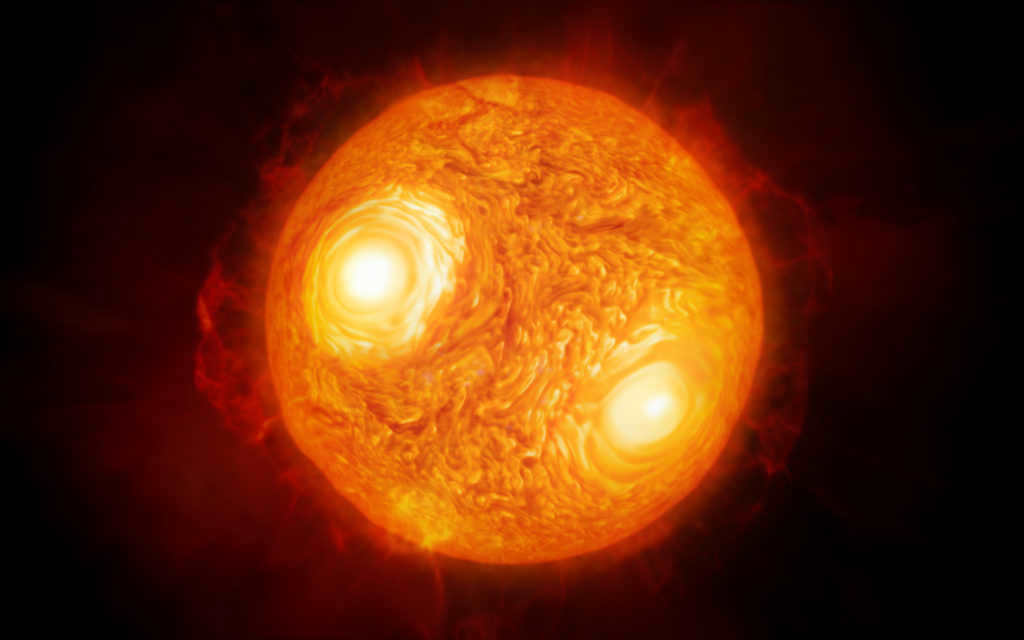
The star’s name incorporates the title of the crimson celestial body: in Greek, it signifies “opposite Ares” (similar to Mars in Latin). Kalb al-Aqrab (Heart of Scorpio) was the designation bestowed upon it by the Arabs – the unchanging celestial body of the Scorpio constellation.
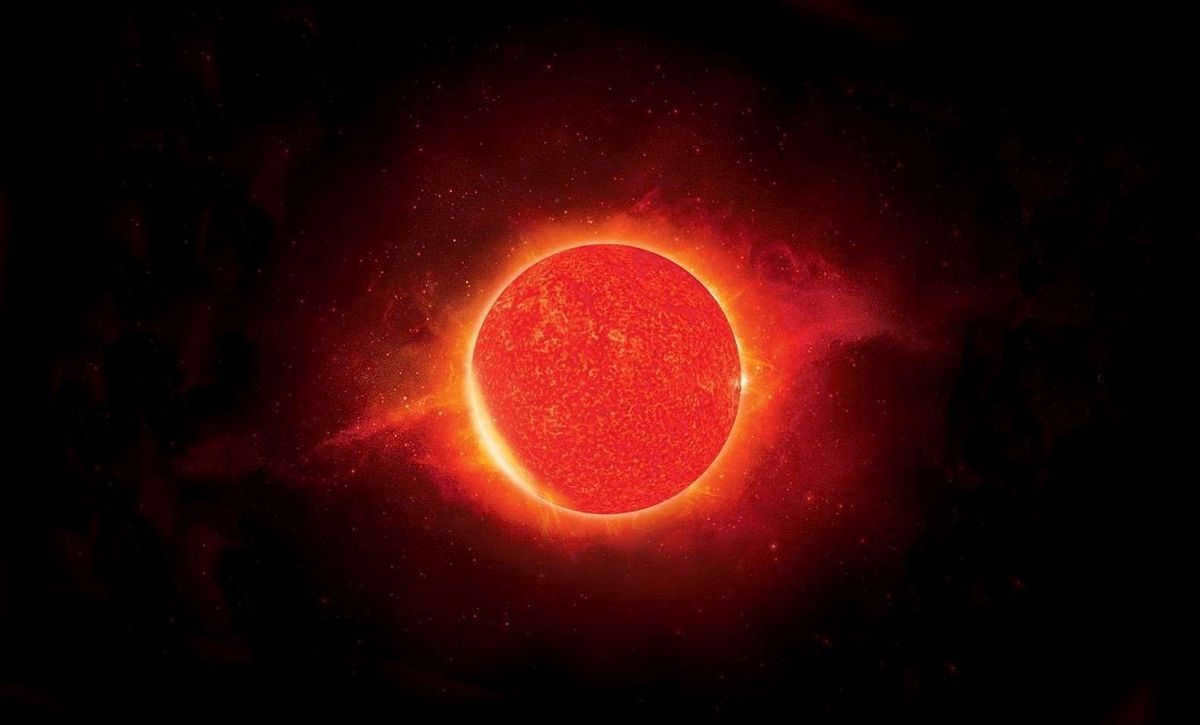
It is challenging to determine the exact time in European history when the star was given the name Vespertilio. Whether it occurred during the Dark Ages or at a later time, possibly after the Crusades. However, the translation of Vespertilio refers to a bat, specifically a vampire. Individuals born under this celestial body were believed to have a predisposition towards violence, destruction, and a naturally aggressive nature.

Aldebaran
The most brilliant star in the constellation of Taurus. According to multiple sources, its brightness is estimated to be 150-500 times greater than that of our sun. Aldebaran emits light in the orange spectrum. It is currently undergoing helium-hydrogen fusion.
Arab astronomers named Aldebaran, which translates to “following the Pleiades but never reaching them”. More precisely, it means “follower”.
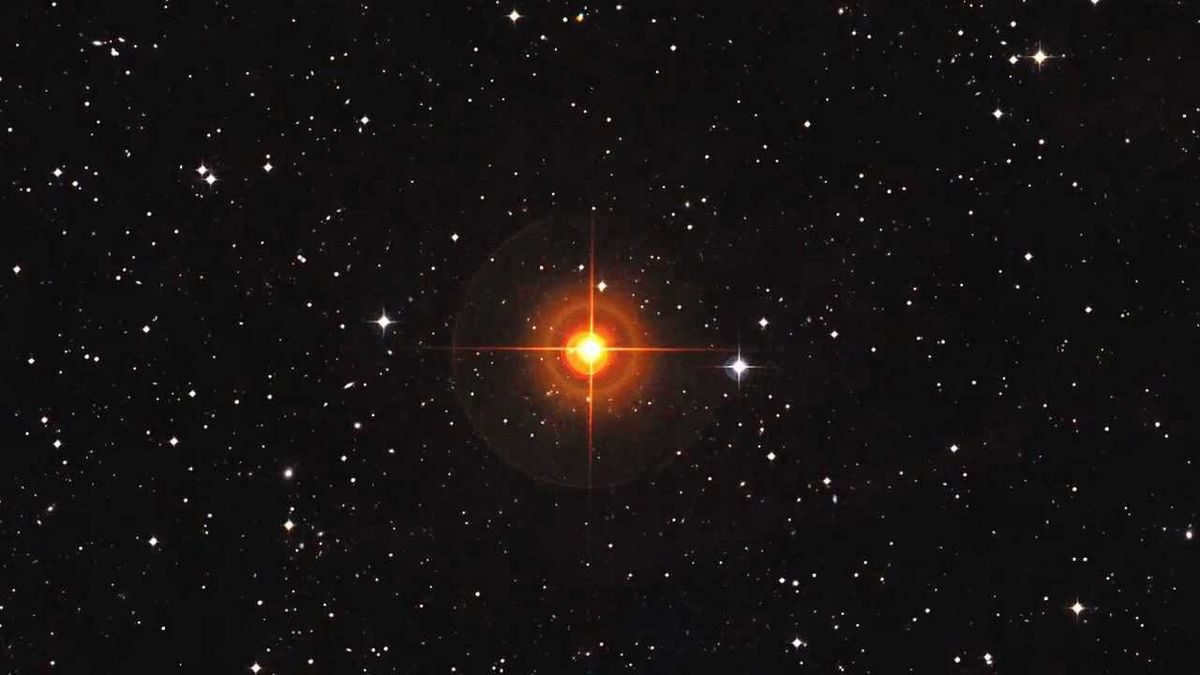
Known as Tusketeer in the Eastern region, Rohini (maiden name) in India, and Heart of the Bull in China, Aldebaran received a special visit from Americans in the early 70s. They sent the Pioneer probe with a message from our planet’s representatives. They predicted that the ship would reach its destination in 2 million years.


Akruks
Polaris, also known as Akruks, is a star that can be easily spotted in the sky by anyone, regardless of their knowledge in astronomy or navigation.

However, the instructions on where and how to locate Polaris are well-known to everyone. All travelers used this celestial object as their guide.

The celestial body in the atmosphere signifies the location of the northern direction in the Northern Hemisphere, as well as the southern direction in the Southern Hemisphere. This celestial body is also known as Polaris and it consists of three stars.

The sky is filled with a multitude of stars that have captivated human beings for centuries. Among these stars are some that have even been used for navigation purposes. One such example is the winter star triangle, which consists of Betelgeuse, Sirius, and Procyon.
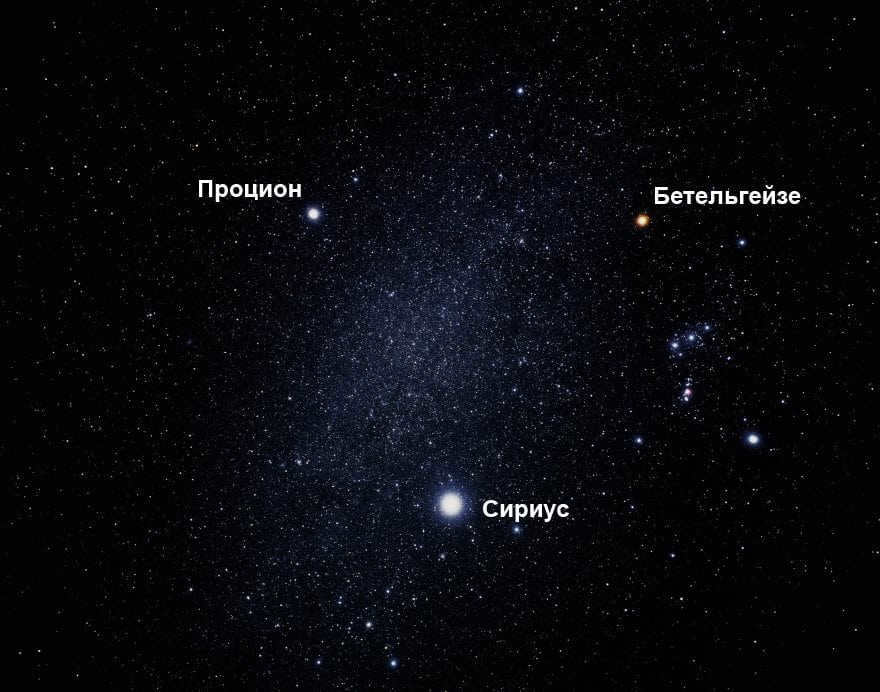
Altair
The Arab scientists drew a parallel between this celestial object and an eagle in flight across the cosmos. There is a reason why astrologers have chosen to name it Altair.
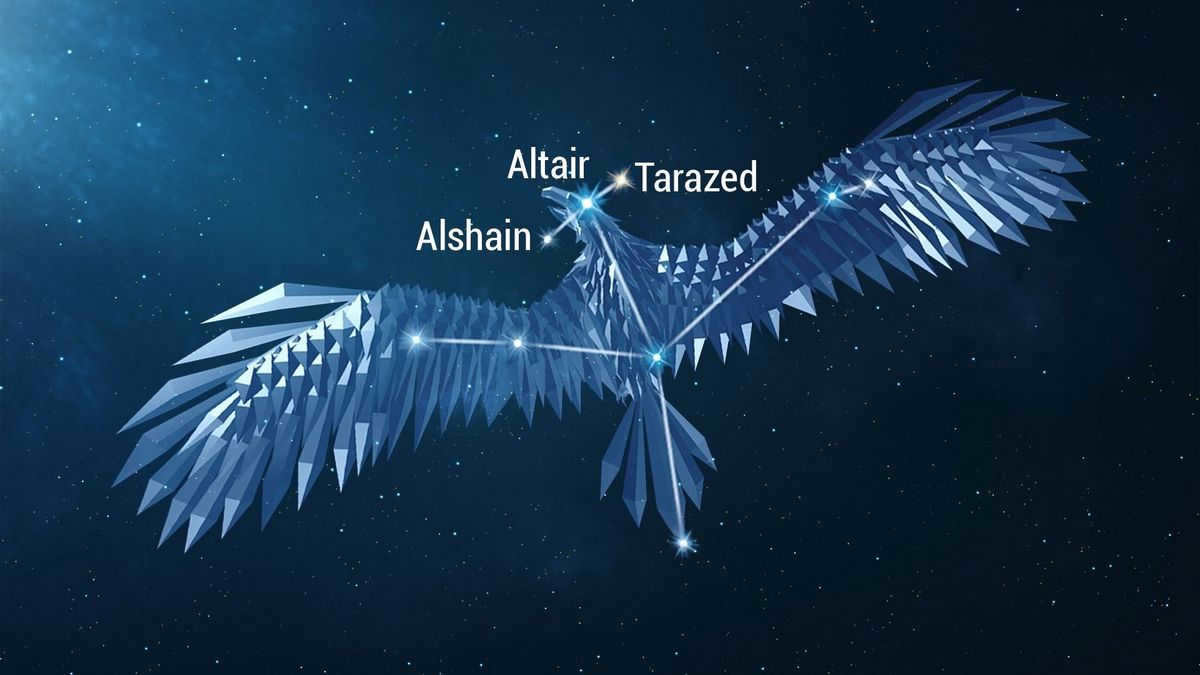
The secrets of the star are well concealed. Its infrequent appearance makes it difficult to observe. Known as “An-nasr al-tair” in Arabic, this star can only be seen once a year, on the 7th day of the 7th month.
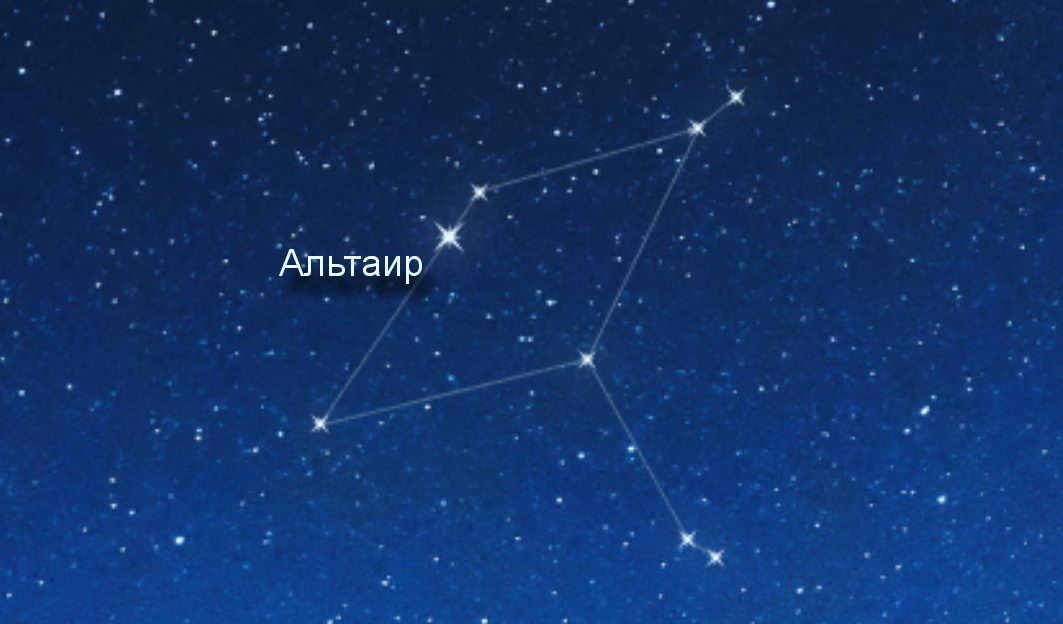
Altair is the 12th most luminous star in the sky and has a captivating Japanese myth associated with it. The myth revolves around a shepherd and a celestial maiden who were forbidden from being together by a goddess due to their frequent and uneven meetings. However, once a year, Altair, the shepherd, patiently waits for his beloved in the sky, shining his brilliant light towards her.


Video: Altair. A one-of-a-kind pale star
Betelgeuse.
A brilliant celestial body in the constellation of Orion, Betelgeuse is a prominent star that can be easily observed without the aid of a telescope. The name Betelgeuse is derived from the Arabic phrase “the hand of the twin,” a fitting description for this impressive cosmic entity.

The star’s mass is between 10 and 20 times that of the Sun, and its luminosity is 100,000 times higher.
In ancient times, Sima-Tsan in China and Guigin in Rome described this star as having a yellow color, unlike its current red appearance.
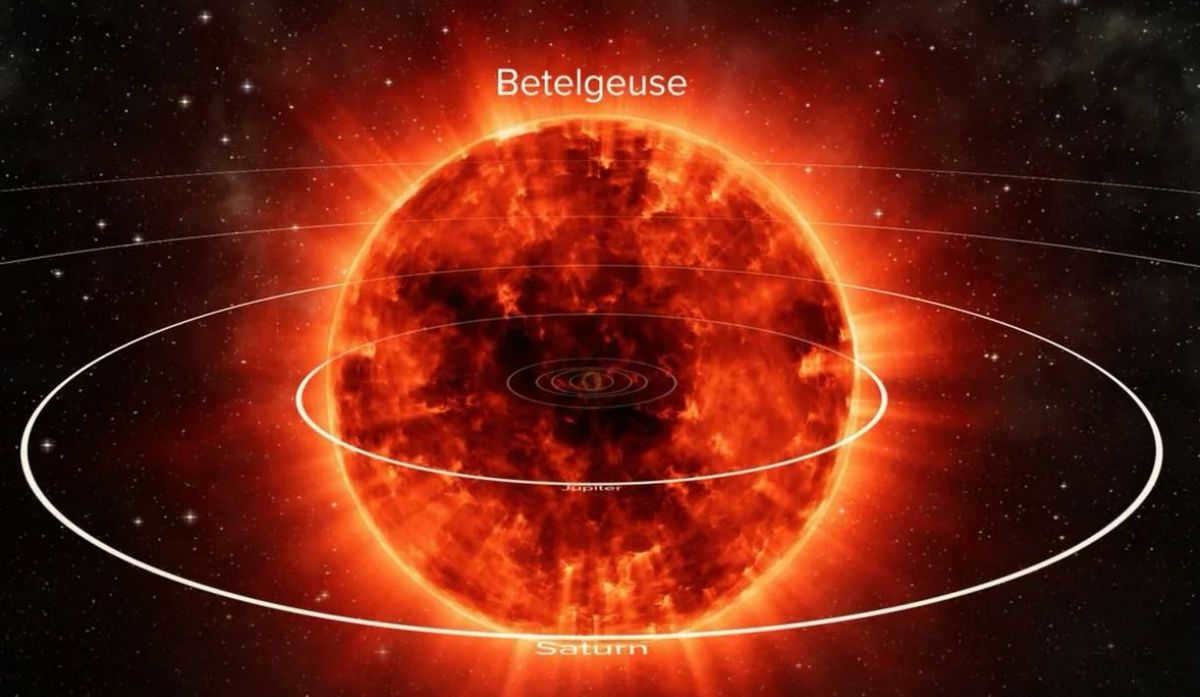
For the past 3 years, astronomers have been observing the gradual dimming of this sparkling celestial body. While the exact distance to the star remains uncertain, it is estimated to be located within a range of 500 to 630 light-years from our planet. Once it undergoes a supernova explosion, the resulting blast will be visible even in daylight.
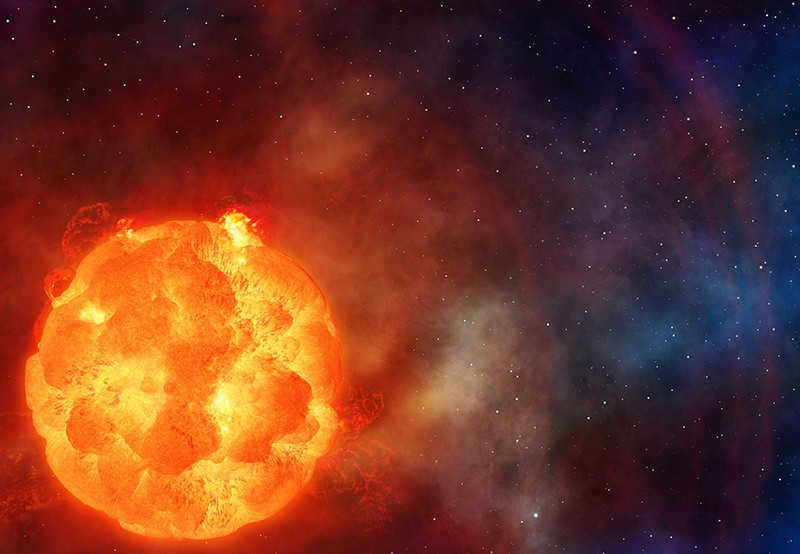
Procyon
Procyon is a member of the double stars category. It is situated in the Lesser Dog constellation, and it can be confidently stated that it belongs there.

Together with its counterpart, the Gomeisa white dwarf, which has exhausted its nuclear fuel, they create a duo. Currently, the names of stars are determined based on the primary star.

The first Porcion is known as Porcion 1, while its companion is called Porcion 2. The main object was dubbed “the dog’s forerunner” by the Greeks and “Sirius that weeps” by the Arabs. These unusual names are attributed to the star’s brightness. It becomes visible in the sky 40 minutes prior to Sirius.
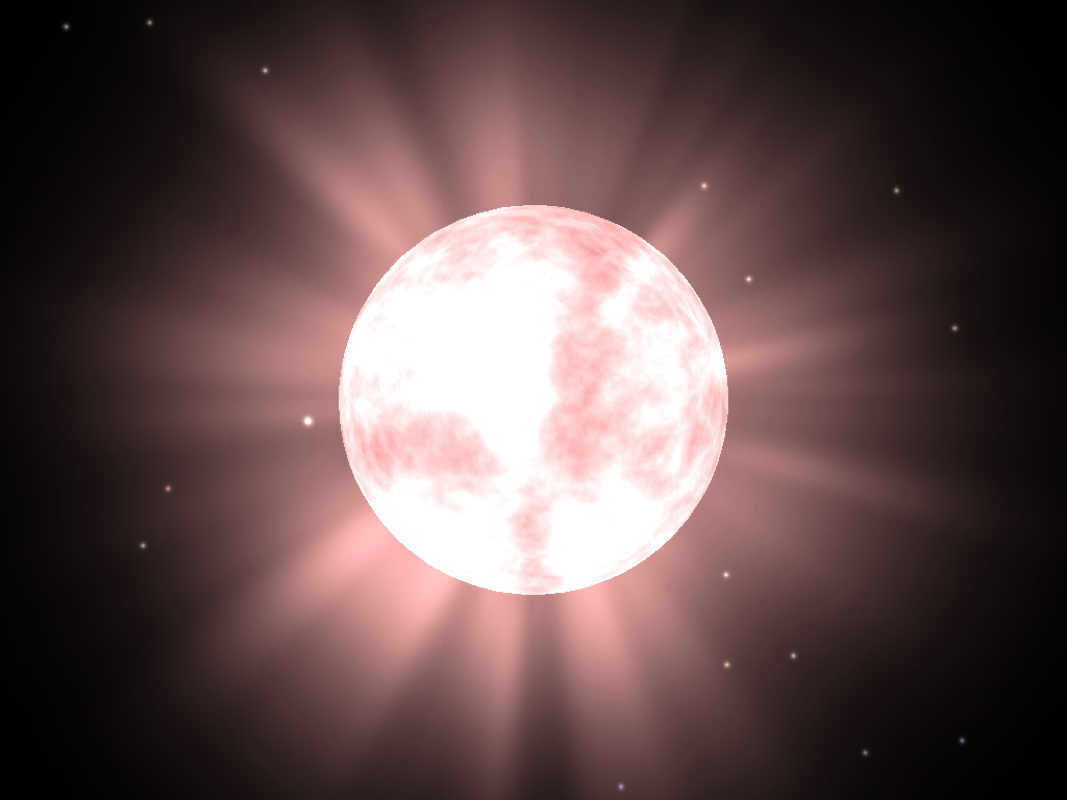
Vega
Vega is the most luminous star in the Lyra constellation. It shines with a brightness that is tens of times greater than that of our Sun. Numerous scientists regard it as a standard against which other stars can be compared.
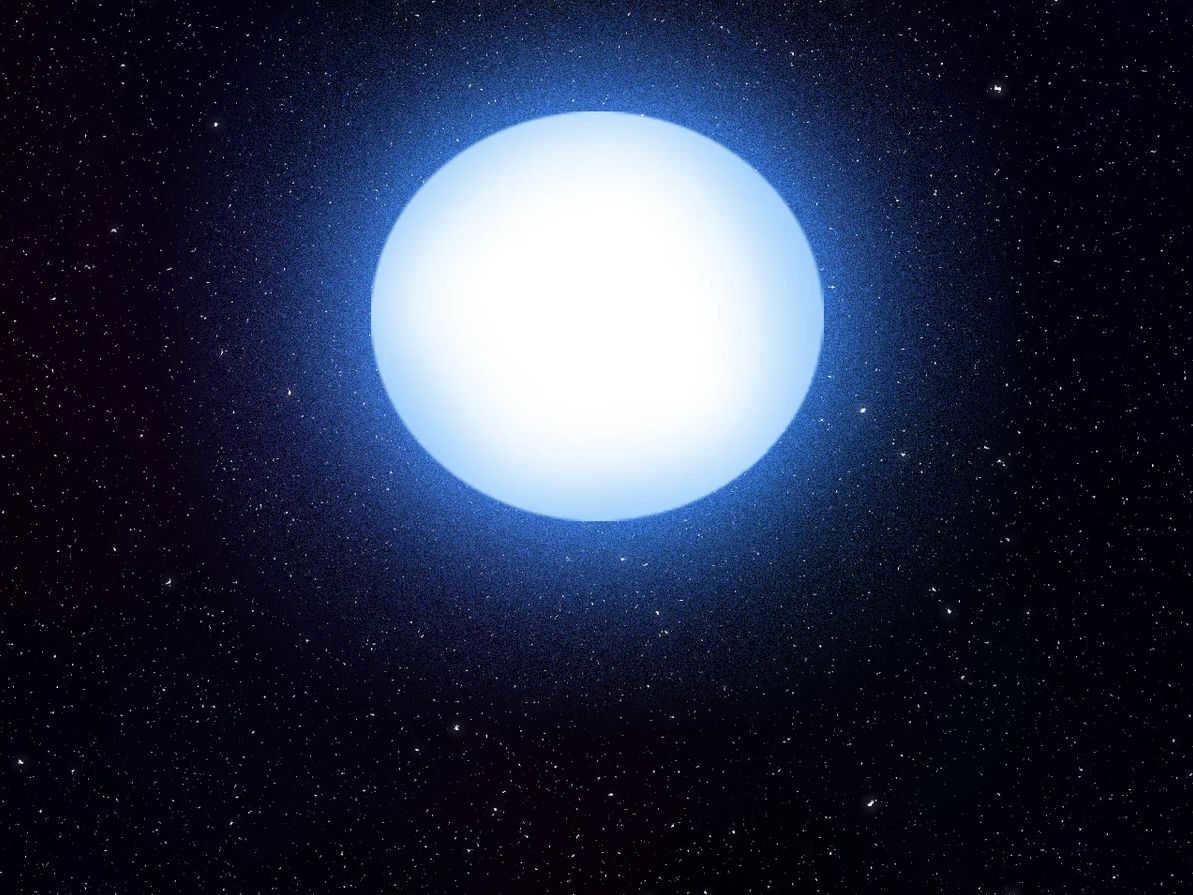
Vega possesses a dust disk that bears a resemblance to the dust belt found in our own solar system’s Kuiper Belt, suggesting the possibility of planets and the potential for life.
When compared to the Sun, Vega spins at a rate 118 times faster and has a rotational speed of 236 km/s.
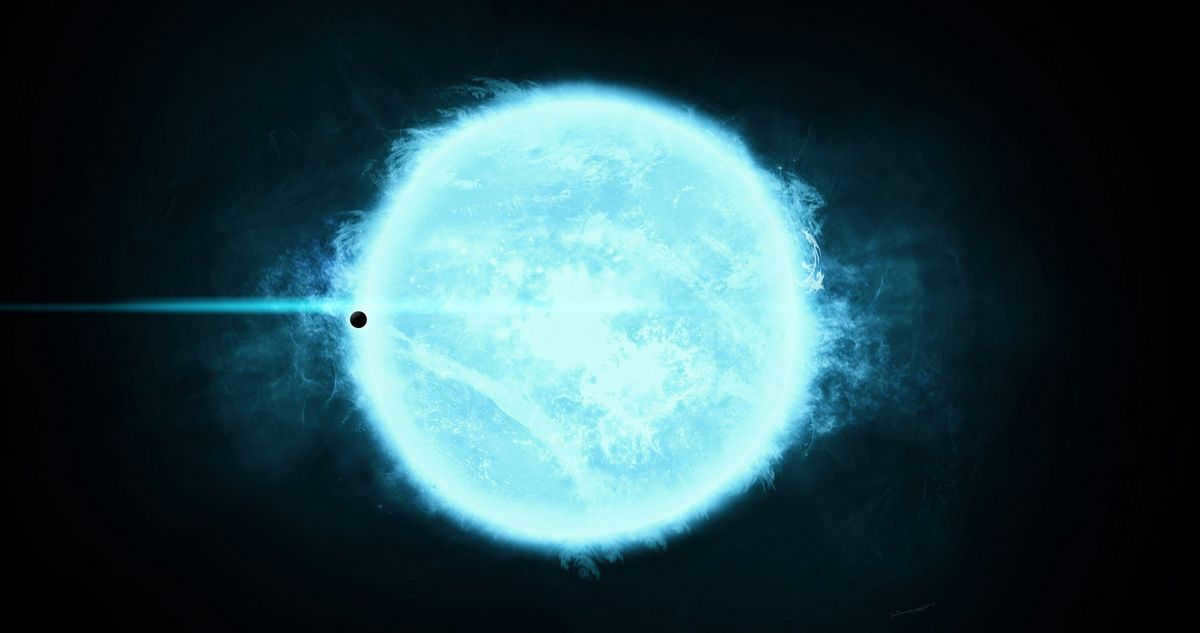
The distinguishing feature of this entity is its previous role as Polaris. This occurred 14,000 years ago and will once again assume this position in 12,000 years. Vega is the second most captured star spectrum by humans, following the Sun.

Arcturus
Arcturus, the initial celestial body that humans have observed in their history following their dominant star. Arcturus is readily visible even in the daytime.
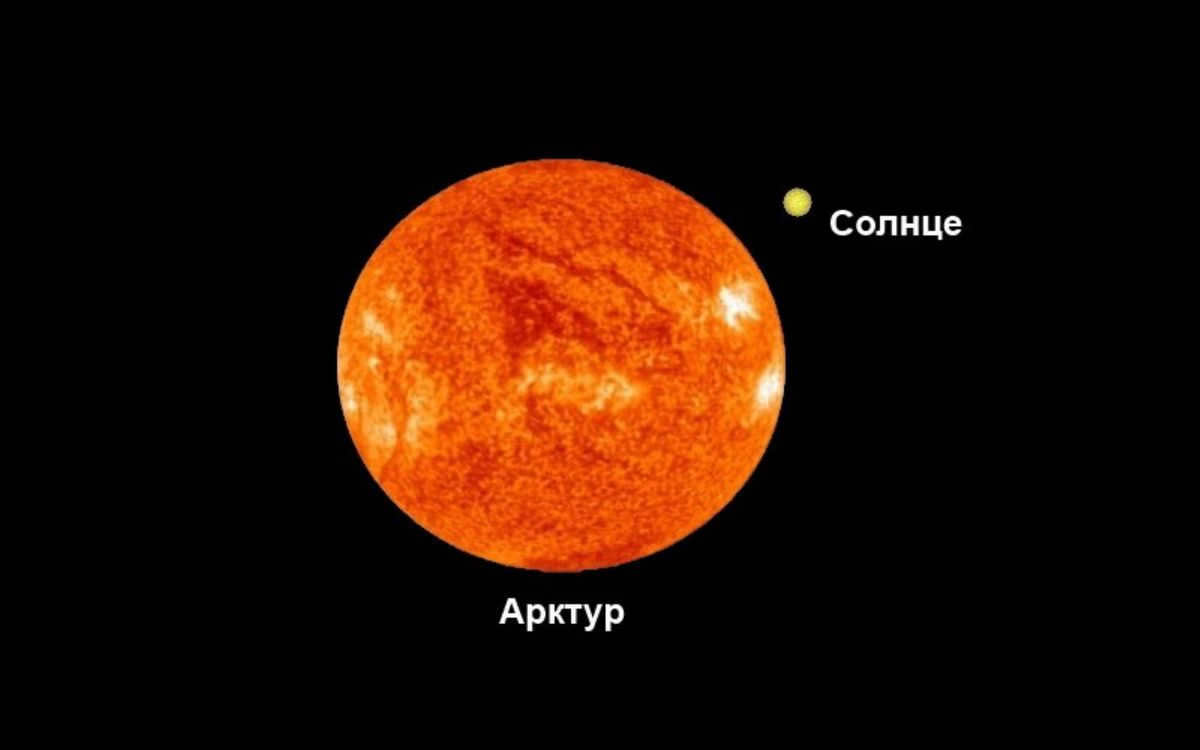
There exists a captivating myth surrounding this celestial dome. The goddess Hera performed a powerful spell, transforming the nymph Callisto into a Medusa as punishment for her misdeeds. Subsequently, she banished her own son to oblivion. Arkutr was appointed as the protector of the bear. This star is positioned to the left of the final star in the handle of the Big Dipper.
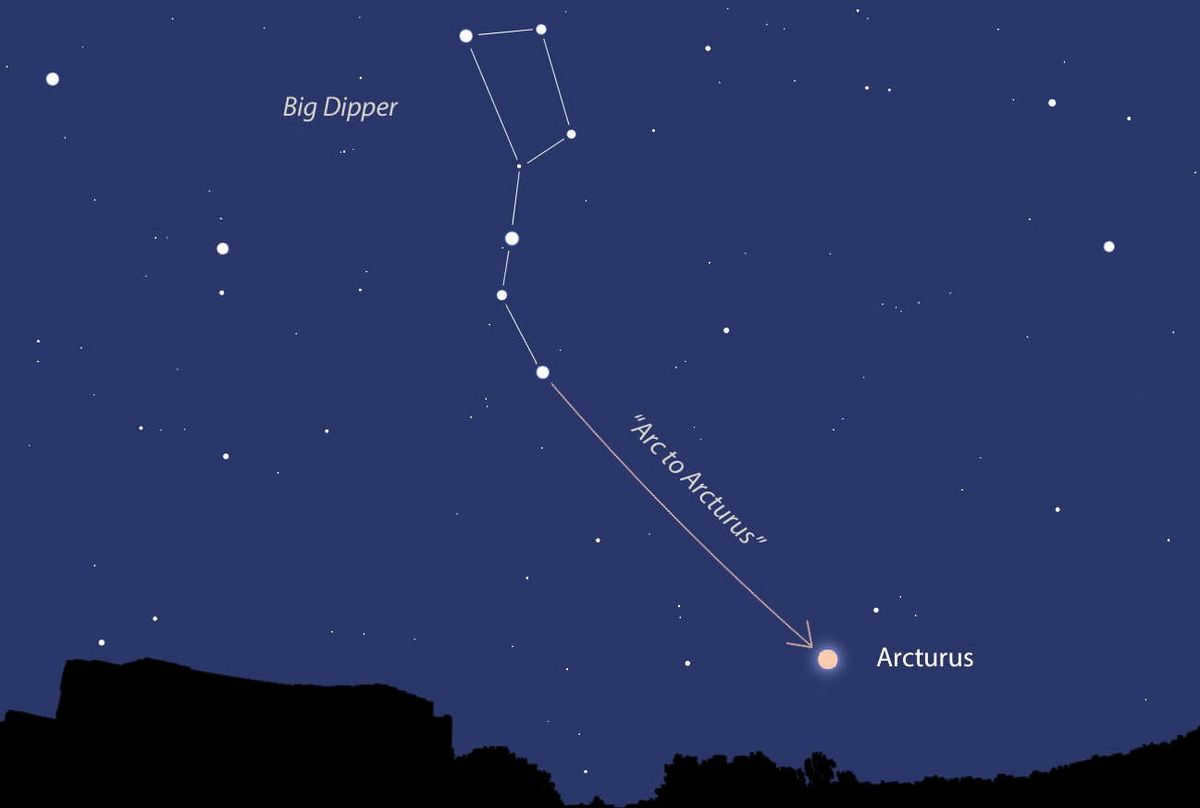
Volopassus boasts the presence of Arcturus, the most dazzling celestial object. It surpasses Sirius in its duration of appearance in the Northern Hemisphere and remains visible throughout the year.
Experts in the field of astronomy speculate that Arcturus originated from a different galaxy that merged with the Milky Way over time. Its distinctiveness lies in its unpredictable trajectory, which can be described as erratic.
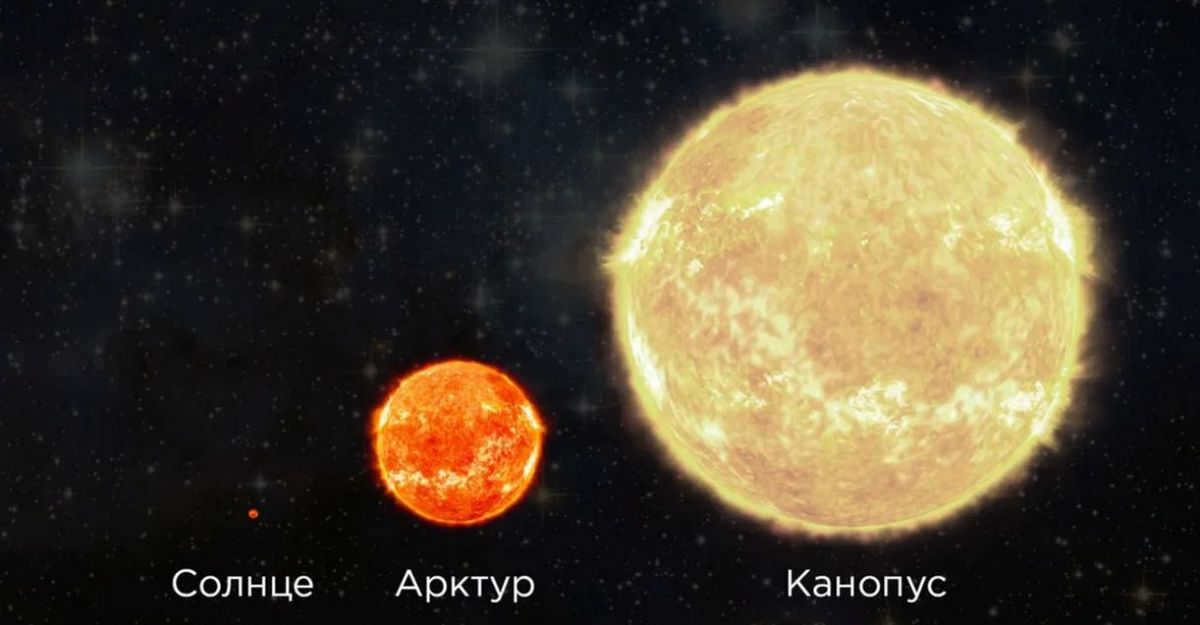
Sirius
The most prominent celestial object in the night sky, Sirius only becomes visible during the winter months in the Northern Hemisphere. In reality, it may not be the absolute brightest star, as this is influenced by its relative proximity to Earth. However, its name derived from Greek translates to “bright” or “brilliant”.

Ancient Sumerians were also familiar with it. Additionally, during the initial ceremonies conducted in Egypt, Sirius was represented by the figure of Isis.
INTERESTING: The traditional portrayal of Isis nourishing her son Horus (who symbolizes the Sun) was later adopted in Christian depictions of icons featuring the Virgin Mary cradling Jesus.


Video: Sirius – the most brilliant star in the celestial sphere
Constellation Titles
Explaining the various types of constellations and the composition of stars within these groups is beyond the scope of this brief article. The nomenclature of constellations is an expansive subject in its own right.
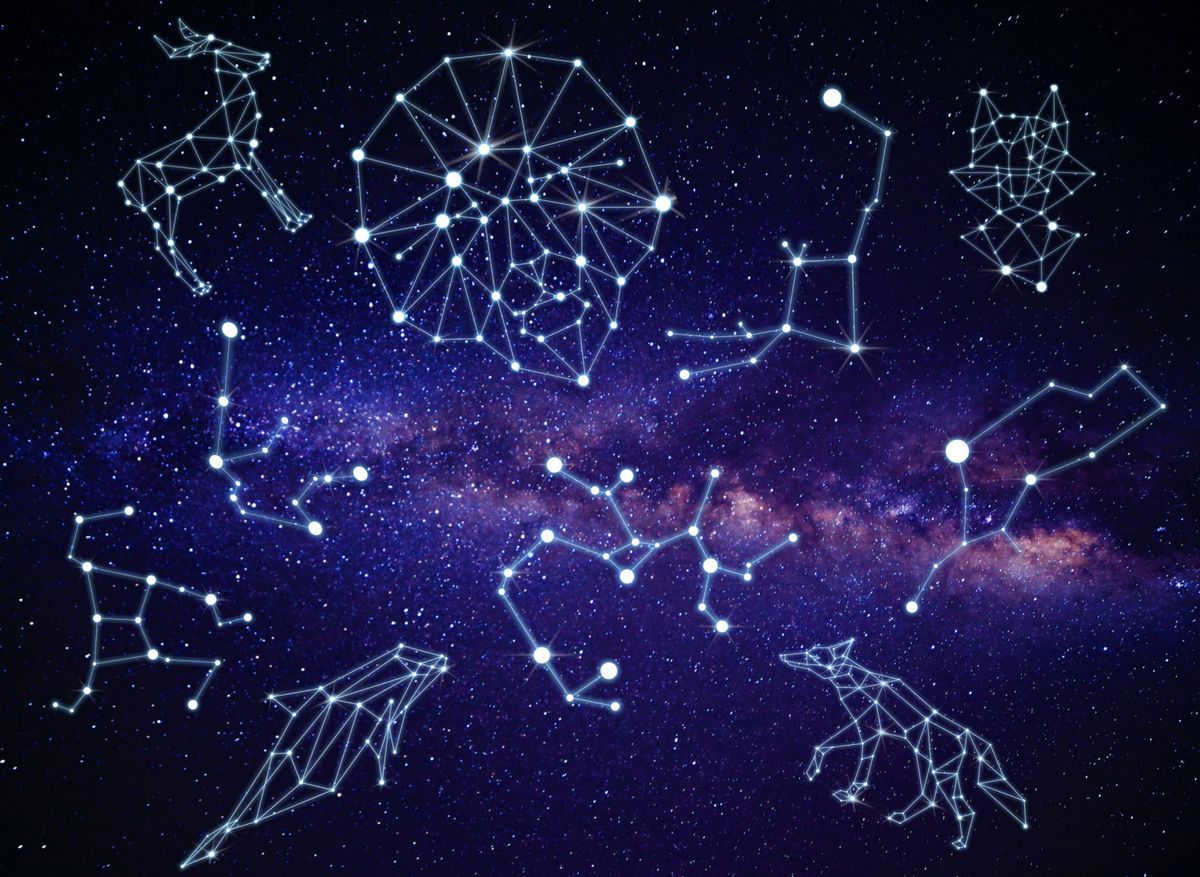
In modern astronomy, there are a total of 88 constellations that are named. However, for the purposes of this discussion, we will focus only on those that belong to the group of zodiacal signs. These constellations form a significant portion of the overall circle of constellations that make up the zodiac.
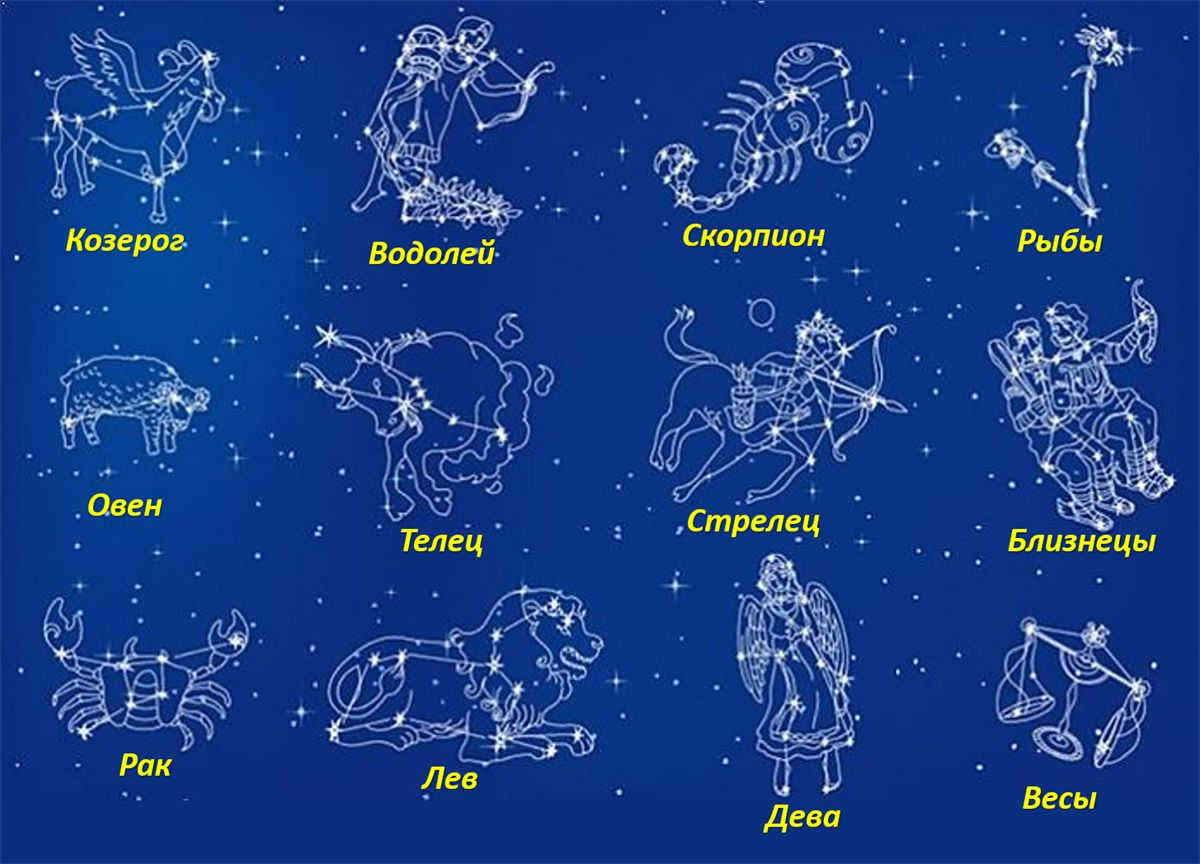
So, here is a compilation of the most well-known constellations in the night sky:
- The Gemini constellation appears after Taurus. It is located in the northern hemisphere and consists of two bright stars: orange Pollux and white Castor. The name of this constellation originates from a Greek myth that tells the story of two brothers who were so deeply connected that Zeus decided to immortalize them in the heavens.
- Next to Gemini lies the constellation Virgo, which is associated with the goddess Themis. She is often depicted holding scales, symbolizing justice. The Romans named this constellation, which was previously considered part of Scorpio. Virgo is comprised of 83 stars and ranks as the seventh largest constellation in the zodiacal group.
- The legend of Aquarius is closely intertwined with the story of Atlantis, an ancient civilization that sank to the bottom of the ocean. In this tale, Zeus, the supreme god, intended to punish humanity for their sins by causing a great flood. However, a heroic figure named Deucalion and his wife managed to survive by seeking refuge. They beseeched the gods to repopulate the Earth, and as a result, a new civilization arose. In honor of Deucalion’s bravery, he was immortalized as the constellation Aquarius in the night sky. This celestial object can be observed using a small telescope.
- Located between the constellations of Leo and Libra, the Star Maiden is an equatorial constellation. The myths associated with this constellation vary among different cultures, and even within a single culture, there is no consensus on the identity of the figure depicted. Nevertheless, the Star Maiden is believed to watch over us from above. In our time, this constellation marks the point of the autumnal equinox. The brightest star in the Star Maiden is Spica, which is actually a binary star system.
- The 13th constellation of the Serpent or Serpentine is represented in astronomy, unlike astrology. In Ptolemy’s almanac, it is referred to as Ophichus, which translates to “he who carries the serpent.” According to the legend that gave rise to this celestial object, it is based on the myth of Asclepius, a healer who had the ability to bring the dead back to life. As punishment for his actions, Zeus transformed Asclepius into stars that now adorn the night sky.
- Capricorn, a constellation of the southern hemisphere, has its own mythological backstory. According to one legend, it is associated with the Greek god Pan, who is symbolized by the goat. In an older Egyptian legend depicted in Tarot cards, Capricorn is represented by a figure named Baphomet, who is believed to be the prince of this world. The primary stars of Capricorn are Alpha and Gamma.
- The constellation of Leo has been known for over 5,000 years, dating back to ancient Sumer. In ancient Greek mythology, the lion was represented by the Nemean lion, which famously defeated Heracles, the son of Zeus. In recognition of its bravery and fearlessness, the gods immortalized the lion by placing it among the stars. Notable stars in Leo include Regulus and Denebola.
- Aries is portrayed as a ram in the night sky. Its distinct shape resembles downward-bent horns, symbolizing stubbornness. According to Greek mythology, this constellation guided the Argonauts on their quest for the golden fleece. Another interpretation suggests that the golden fleece itself was represented by Aries. A notable feature of Aries is the double star Mesartim, one of the first to be discovered using a telescope.
- The constellation of Cancer poses the greatest challenge in terms of visibility among all the constellations in the zodiacal group. It can only be observed on a clear night, situated between Leo and Gemini. According to ancient Greek mythology, Cancer was under the protection of the goddess Hera, who sent it to assist the Lernaean Hydra in its battle against Hercules. In recognition of its loyal service, Cancer was granted immortality by Hera. The Greeks, known for their astuteness, were able to discern the movement of stellar luminaries, observing how the stars of Cancer seemed to retreat from the sun.
- The constellation known as Pisces depicts the tale of a mother and son who were saved from a monster in the waters of the Euphrates. The mother and son are Aphrodite and Eros, who were transformed into two fish. The constellation in the sky actually resembles two fish, and the gods of Olympus placed these images in space. They symbolize the Western and Northern fish, connected by the star Alrisha.
- Scorpius is situated entirely within the Milky Way. It is easy to locate, as it is found between Libra to the west and Sagittarius to the east. To the north is the Serpent, and to the south is the Sacrifice. In Greek mythology, Scorpius is intertwined with the tragic story of Orion, a proud giant who killed Artemis’ bull. In revenge, she unleashed a scorpion upon him, and the scorpion stung Orion to death.
- The Taurus constellation consists of the star Aldebaran, the star clusters Hyades and Pleiades, and the Crab Nebula with its numbered Pulsar. According to ancient myth, Zeus transformed into a bull and abducted Europa, keeping her captive on the island of Crete. As a tribute to her, the stars of Taurus were arranged in such a way that she could always see the head of the bull, no matter where she was on Earth.
Video: “Taurus” Constellation
Today we are going to discuss the various and fascinating names of stars. As you are aware, a vast number of them have been classified into specific categories, distinguished by their colors and spectral classes, among other factors. Let’s explore some captivating terms and names of stars together.
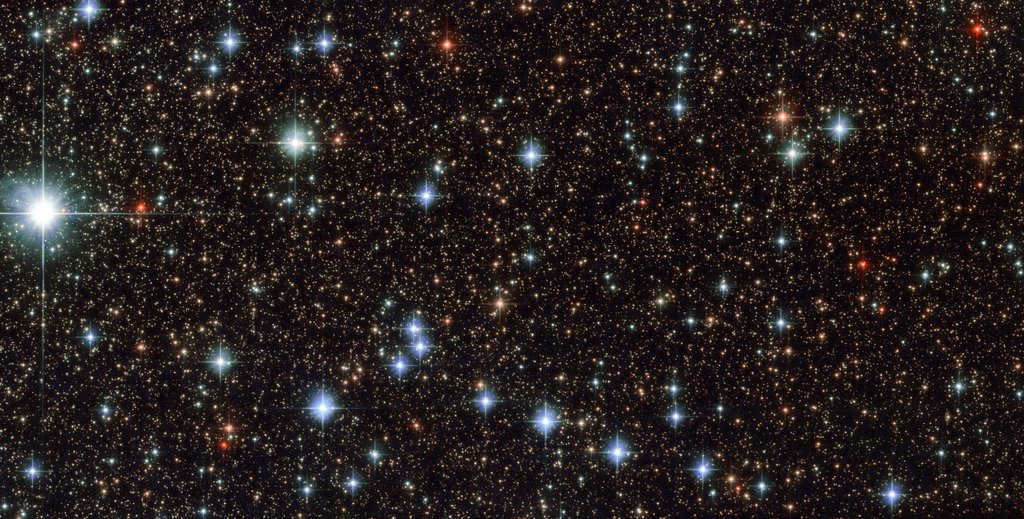
One important point to note is that luminaries are a part of various cosmic objects, such as galaxies or star systems.
Furthermore, they have interactions with other bodies and with each other. This can be observed in constellations, which are groups of stars that share a common name. In modern astronomy, constellations also refer to specific sections of the celestial sphere that aid in navigating the night sky.
While many people believe that motion is a necessary characteristic of luminaries, this is not entirely accurate. Fixed stars, for instance, exist as a separate category. In fact, there are a significantly greater number of fixed stars than one might imagine. This category includes all stars except for our Sun.

Unmoving celestial entities – are astronomical bodies that, when observed from Earth without the aid of optical instruments, maintain a constant position in relation to other stars.
Undoubtedly, having knowledge about the location and nature of celestial objects is crucial for humanity.
Various Names for Stars
It is common knowledge that each star in the sky, with its unique shimmering colors, is assigned a name. In fact, every celestial object, be it a luminary, a planet, an asteroid, or a comet, has its own designated name. However, this naming convention applies only to astronomical bodies that have been observed, detected, or postulated by humans – in other words, those whose existence is known or presumed.
Stars with Different Colors and Their Designations
It is common knowledge that stars can vary in color, which consequently leads to different names for these celestial bodies. Therefore, stars are named based on their distinct coloring. For instance, stars with a white hue are named after this characteristic color. On the other hand, there are stars with a bluish tint, whose spectrum shifts towards the blue region.
Among the white stars, there are well-known stellar objects such as Altair, Sirius, Vega, and Castor. On the other hand, there are also several prominent blue stars, including Rigel, Tau of the Big Dog, Zeta Corma, Zeta Orion, and others.
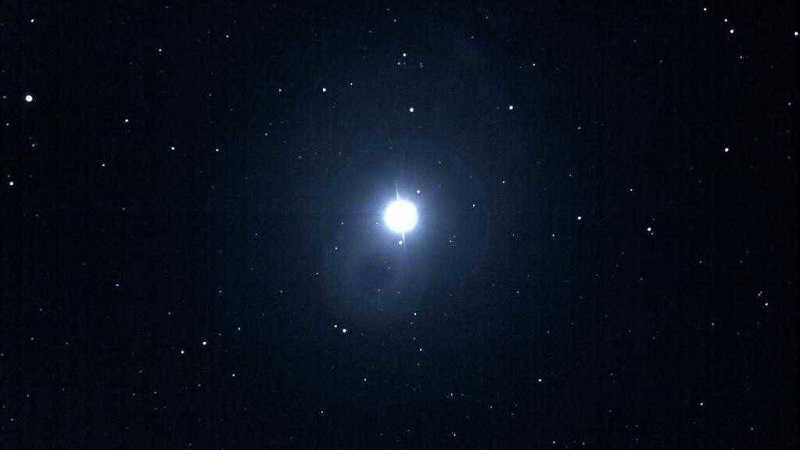
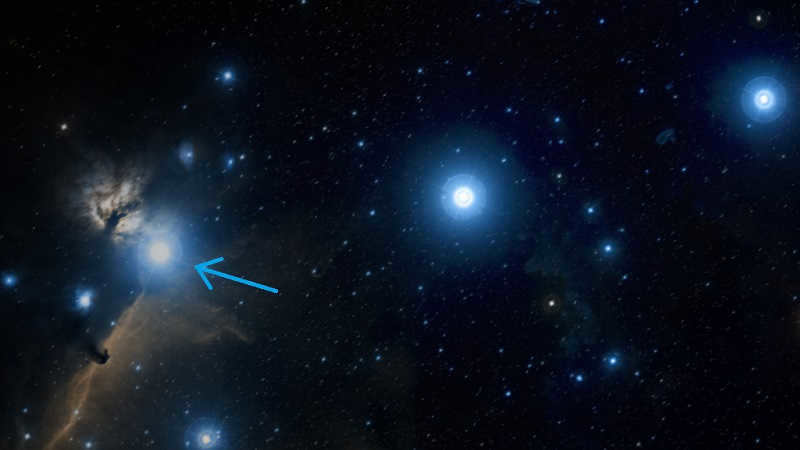

The Largest Star in the Universe
Scientists have identified the largest star in the universe, known as UY Shield. More information about this extraordinary celestial body can be found in this article.
It is worth noting, however, that not all stars have distinctive names like our own Sun or famous stars like Sirius, Aldebaran, Betelgeuse, and Vega. Many stars are simply designated by letters within their respective constellations, such as UY Shield and numerous others.
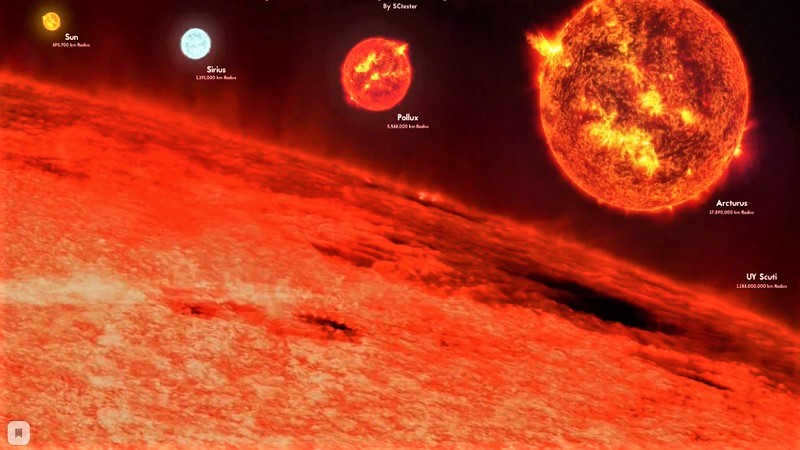
The Most Gorgeous Star Names
In reality, it proves to be quite a challenge to select the most stunning name from the vast array of celestial bodies. As numerous star names are linked to ancient myths, which, by the way, are incredibly vivid and captivating. These names possess their own unique and unparalleled significance, which undeniably contributes to their exceptional beauty and profoundness.
Many of the celestial bodies were named by the ancient Greeks and Arabs, who can be considered the pioneers of astronomy. These early civilizations were the first to direct their gaze towards the heavens and begin studying them. As a result, the most prominent and striking objects in space bear Greek and Arabic names, which have a captivating and mysterious quality. However, when translated, these names often reveal simple and easily understandable meanings.
Undoubtedly, the most beautiful star name will vary from person to person, as it is a matter of personal preference. Some may find Altair, Sirius, or Algol to be the most enchanting, while others may be drawn to Mimosa, Capella, or Fomalgaut.
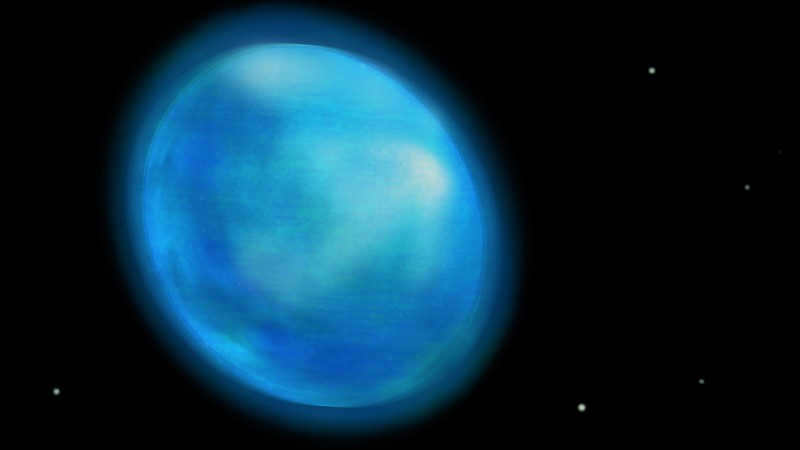
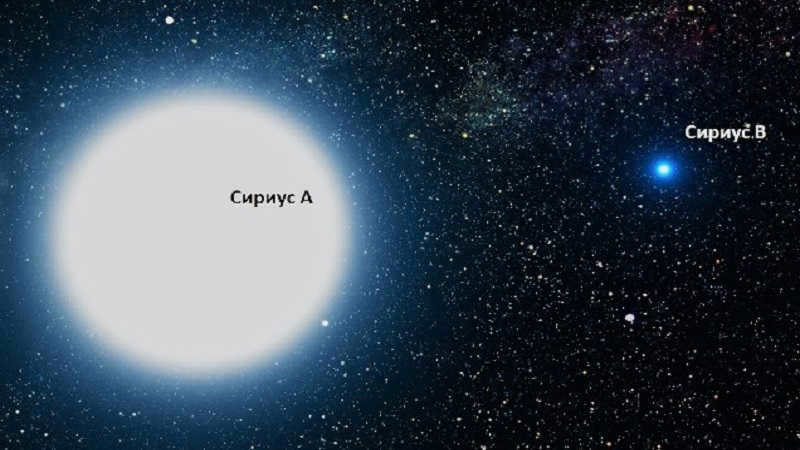
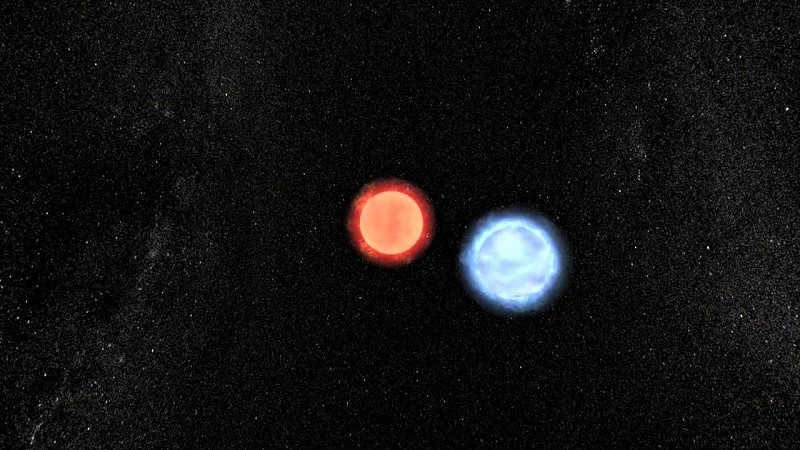
Without a doubt, the celestial bodies vary in their physical attributes, formation, and lifespan. While some exist in solitude, others come together to create families or become part of larger systems. Yet, all of them are integral components of our vast Universe. In their own distinct ways, they possess beauty, awe-inspiring qualities, and unparalleled uniqueness.
Undeniably, the designations assigned to stars hold a certain allure and captivation. Furthermore, they often carry connections to ancient myths and legends, adding an element of mystique, intrigue, and even a touch of the fantastical.

Do you have any knowledge of famous stars? It’s common knowledge that our universe is filled with a multitude of stars. We have compiled a list of the most well-known ones.
The Sun
Of course, everyone is familiar with our very own star, the Sun. In reality, it is the only star in our solar system. Additionally, all the objects in our system, including Earth, orbit around it.
The Sun is actually a yellow dwarf star. It is responsible for providing the radiation and light that sustains life on our planet. Furthermore, in astronomy, the Sun is used as a reference point for describing and characterizing other celestial bodies. For instance, its radius, mass, and luminosity are important parameters to know. Hence, it is crucial to be knowledgeable about the characteristics of the Sun.
Therefore, the primary star has a radius of 695,500 kilometers and a mass of 1.9891 × 1030 kilograms or 332,982 times the mass of the Earth.

The most popular celebrities (TOP-10)
As it is well known, there are numerous celebrities in the entertainment industry. Undoubtedly, the most famous celebrities for the general public are the ones that are close to us. Firstly, we can spot them in movies, TV shows, and magazines. Secondly, they are extensively studied and followed by fans.
Brad Pitt
Indeed, Brad Pitt is one of the most recognizable stars in Hollywood. However, he cannot be considered physically large. It is noteworthy that Brad Pitt is a versatile actor and he is considered an icon in the film industry. Additionally, he has won numerous awards and his popularity surpasses many other actors. Importantly, he is highly visible and sought after by fans all around the world.

Proxima Centauri
Remember that Proxima Centauri is the nearest star to us. Even though it is a part of the entire star system known as Alpha Centauri, it is the one that is closest to Earth. Its distance from us is just over four light years, which is the reason why it is so famous. Unfortunately, due to its weak brightness, it cannot be seen from the surface of our planet.

Alpha Centauri
As we have already discussed, we will also delve into it. In reality, it is a triple system that is located in the Centauri constellation. It consists of the unseen Proxima and two components: A and B.
By the way, the latter can be easily seen from Earth with the naked eye. They visually appear as one bright object. This is what makes Alpha Alpha Alpha Centauri the third brightest stars and it is included in the list of the most famous stars.
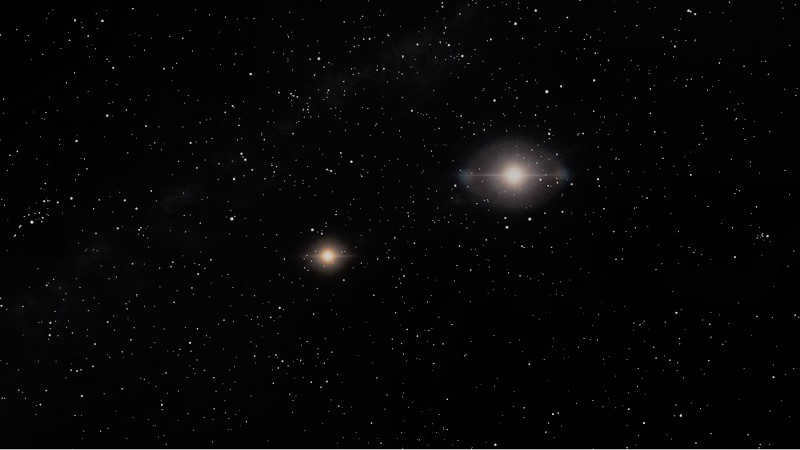
Canopus
When it comes to the second brightest star, excluding the Sun, Canopus takes the title (after Sirius). It is also known as Alpha Kiel, the shining star of the southern hemisphere. This yellow supergiant is famous for a reason among the general public. Its radius is approximately 65 times that of the Sun, and its luminosity is about 14 thousand times higher. However, these characteristics are not visible from Earth.

Arcturus
What is crucial is that this giant orange star can be easily seen, particularly in the northern hemisphere. Moreover, it is situated in the Volopassus constellation. Furthermore, in this specific region. Arcturus stands out as one of the most brilliant celestial bodies. Nevertheless, it ranks fourth in terms of brightness among all the stars in the sky. Simultaneously, its dimensions are approximately 25 times that of the Sun.
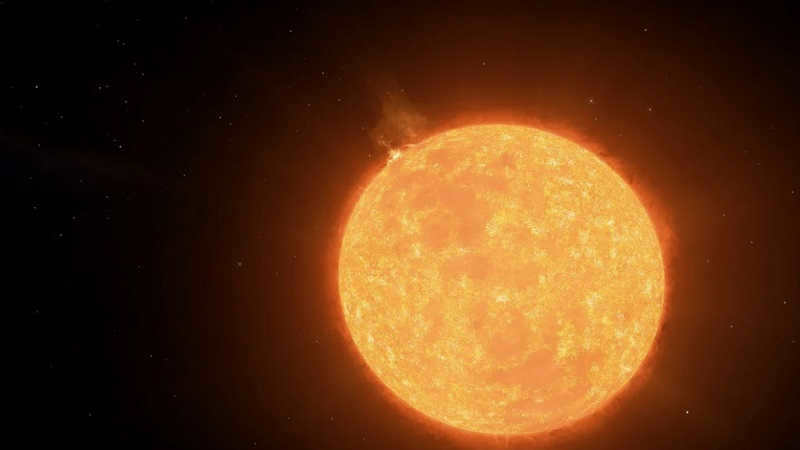
Vega
This incredible celestial body can be found in the constellation Lyra. Interestingly, it ranks just behind Arcturus in terms of its luminosity. Nonetheless, it holds the fifth position among all stars in this particular characteristic, which is well-deserved. It is worth noting that Vega has been the subject of extensive research by astronomers. At one point, its brightness served as the zero point in the measurement of stellar magnitudes.
Furthermore, Vega serves as the reference point for infrared stars. These are stars that possess a disk composed of gas and dust, which emits energy in the infrared spectrum.
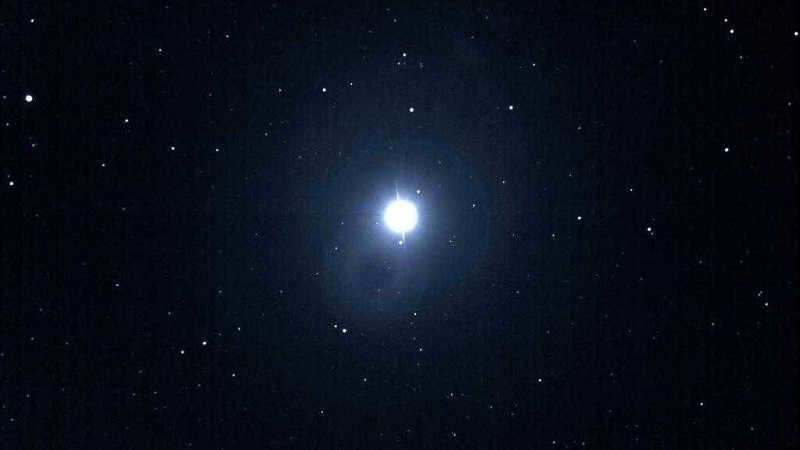
Aldebaran Star
In reality, this orange giant star is among the most luminous in the celestial sphere, situated in the Taurus constellation. It possesses a radius equivalent to 44 times that of the sun. Its remarkable luminosity facilitates its identification in the nocturnal sky. This is likely the reason why the immense Aldebaran star is so renowned.
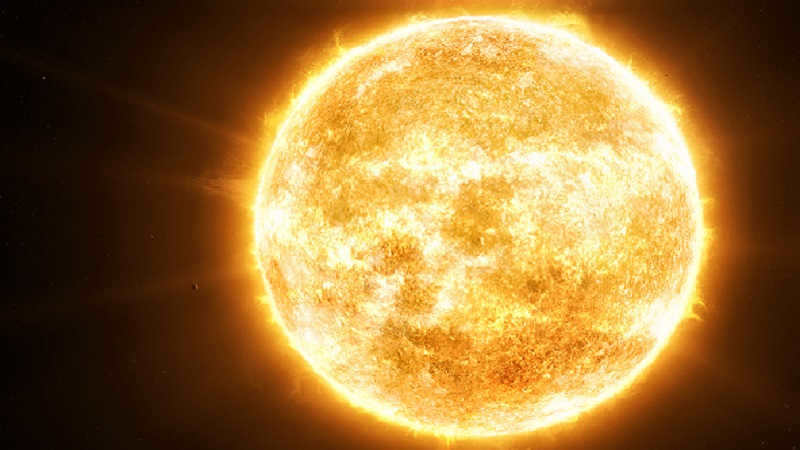
Betelgeuse
It is not surprising that Betelgeuse, one of the well-known constellations, is highly popular. It is important to note that Betelgeuse is a red supergiant star that is losing gas from its atmosphere and is classified as a semi-regular variable star.
Despite being extensively studied by scientists, there are still many unanswered questions about Betelgeuse. One of the unresolved mysteries is its precise size and distance. The star has a massive radius (approximately 1075 times that of the Sun), and the annual parallax measurement is significantly smaller than the angular diameter of the stellar disk, making accurate calculations challenging. However, astronomers estimate that the distance to Betelgeuse is around 170 parsecs or 500-640 light years.
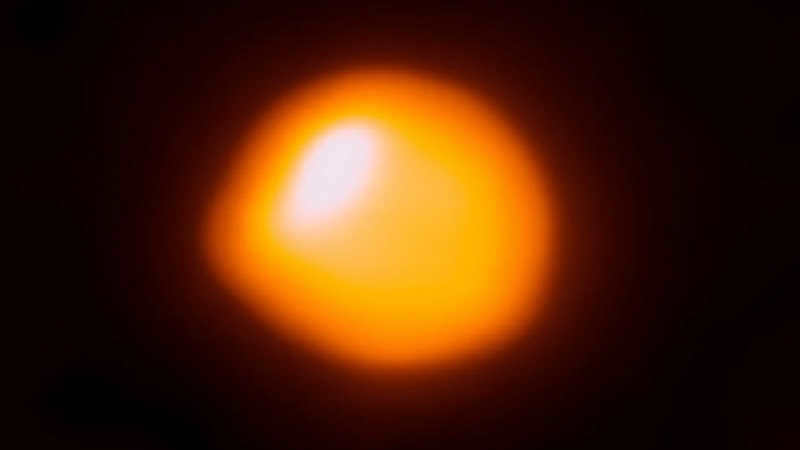
Rigel
It is part of the group of the most brilliant celestial bodies. Scientists have recently discovered that Rigel is not just one star, but a triple star system. It is composed of a massive blue supergiant and a binary system of main-sequence stars. Interestingly, Rigel is also known as Beta of Orion. Moreover, it has a size that is equivalent to 78.9 times the radius of the Sun.

Pollux
One interesting and bright star is found in the constellation Gemini. It is the Beta star of Gemini known as Pollux, which is an orange supergiant. What’s interesting is that its brightness is greater than the Alpha star of the constellation. It ranks 17th among all the stars in terms of brightness. Scientists predict that this star will eventually evolve into a white dwarf, although currently its size is 8.8 times that of the Sun.
